CATCHING UP WITH EVERYONE’S FAVOURITE QUEER ICON, ALAN CUMMING

THE HISTORY OF THE (SUPER-GAY) INTERNATIONAL MALE CATALOGUE
THE QUEER ICONS OF THE RIAN JOHNSON UNIVERSE
THE PLEASURE OF FLIRTY STRAIGHT CELEBRITIES
1 CELEBRATING CANADA’S LGBTQ2 COMMUNITY MARCH / APRIL 2023











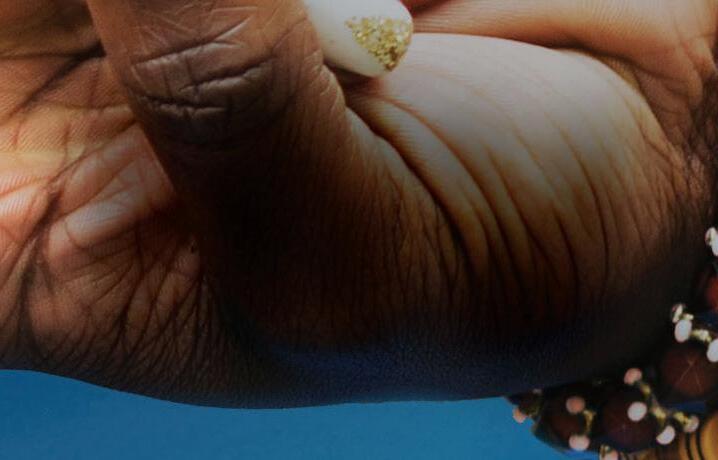
Talk to your doctor about your HIV treatment options MyHIVTreatmentOptions.ca Stock photo. Posed by model. Brought to you by one of Canada’s leading research-based pharmaceutical companies. Code: PM-CA-HVX-JRNA-220001-E Date: 08-2022 There is more to life than viral suppression YOU HIV
inmagazine.ca

PUBLISHER
Patricia Salib
GUEST EDITOR
Christopher Turner
ART DIRECTOR
Georges Sarkis
COPY EDITOR
Ruth Hanley
SENIOR COLUMNISTS
Paul Gallant, Doug Wallace
CONTRIBUTORS
Jesse Boland, Matthew Creith, Adriana Ermter, Noel Hoffman, Karen Kwan, Paul Langill, Luis Augusto Nobre, Rowan O’Brien, Ivan Otis, Paul Pereira, Kimahli Powell, Warren Urquhart
DIRECTOR
Benjamin Chafe
DIRECTOR OF COMMUNICATIONS AND COMMUNITY ENGAGEMENT
Jumol Royes
CONTROLLER
Jackie Zhao ON
ADVERTISING & OTHER INQUIRIES (416) 800-4449 ext 100 info@inmagazine.ca
EDITORIAL INQUIRIES (416) 800-4449 ext 201 editor@inmagazine.ca
4 IN MAGAZINE MARCH / APRIL 2023
Magazine is published six times per year by Elevate Media Group (https://elevatemediagroup.co). All rights reserved. Visit www.inmagazine.ca daily for LGBTQ2+ content. 180 John St, Suite #509, Toronto, Ontario, M5T 1X5
IN
OF BUSINESS DEVELOPMENT
THE COVER: ALAN CUMMING
PHOTO BY FRANCIS HILLS
Issue 111
March | April 2023
INFRONT
06 | POLARIZING POLISH
Nail polish may just be the cosmetics industry’s number one gender-stereotype disruptor
08 | MAKING BETTER MISTAKES
Make mistakes. Make more mistakes! You might find or do something great by mistake
10 | LGBTQ+ ORGANIZATIONS & INDIVIDUALS REPORT INCREASE IN HATE ON TWITTER
Twitter under Elon Musk has failed to protect from online violence and abuse, according to a new survey
11 | BREAK THOSE BAD PANDEMIC HABITS
Adopted some unhealthy habits through the past few years? Break them now!
12 | WHAT IT MEANS TO BE A WOMAN LIVING WITH HIV
We talk to PASAN about the POWER Project and the organization’s work to empower and improve the lives of those identifying as women in the HIV community

14 | UNDERSTANDING THE HUMANITARIAN CRISIS IN AFGHANISTAN
Why Canada needs new refugee programs to help LGBTQI+ people at risk
FEATURES
16 | FINDING SAFE SPACE AMONG A GROUP OF STRANGERS
Sharing my struggles, dreams and deepest secrets with people I’ve never met IRL has been a game-changer
18 | DUNGEONS & DRAGONS CAN BRING QUEER FANTASY TO LIFE
A queer exploration through role-playing games
20 | NEPO BABIES, AND THE COST OF DRAG
When life is more expensive, fewer artists can create, and the creative scene of a city suffers
22 | #THEDISH IS SERVED
Adam Barta cooks up an unreal reality show with “Mama June” Shannon and Tan Mom
24 | CATCHING UP WITH EVERYONE’S FAVOURITE QUEER ICON, ALAN CUMMING
The Tony- and Emmy-award-winning actor dishes on Och & Oy!, his current Broadway obsession, the Spice Girls and more
28 | THE FRUSTRATING IMPOSSIBILITY OF PROPER QUEER REPRESENTATION
Representation isn’t reparations, no matter how badly television networks and movie studios try to convince you it is
30 | THE QUEER ICONS OF THE RIAN JOHNSON UNIVERSE
We celebrate the director’s contribution to the arts by highlighting the various queer icons he has placed centre stage in his blockbuster projects
42 | THE HISTORY OF THE (SUPER-GAY) INTERNATIONAL MALE CATALOGUE

A look back at the unusually fashionable history of the groundbreaking mail-order catalogue
46 | THE PLEASURE OF FLIRTY STRAIGHT CELEBRITIES
As starved as LGBTQ+ people have been, historically, for authentic LGBTQ+ stories on screen, they don’t necessarily need to see their own stories to be delighted
48 | TAN LINES IN TORREMOLINOS
A small beach town with a big gay attitude sets the scene for a Pride Weekend on Spain’s Costa del Sol that you will never forget
52 | FLASHBACK: MARCH 7, 1988 IN LGBTQ+ HISTORY
The legendary Divine dies in a Los Angeles hotel room
FASHION
32 | TROPIC THUNDER
Take a peek into some of the trends that’ll make the upcoming spring season a blast
5 111
THIS ISSUE OF IN MAGAZINE IS BROUGHT TO YOU BY
Read the story of the rise and fall of one of the originators of the mail-order boom: the super-gay-but-not-gay International Male mail-order catalogue, on page 42
Polarizing Polish
Nail polish may just be the cosmetics industry’s number one gender-stereotype disruptor
By Adriana Ermter
Gender structure may still be hung up on who wears what, from lipstick to eyeshadow, but we can happily wave a wellmanicured middle finger at its resistance. Literally. An equal opportunist, according to author Suzanne E. Shapiro’s book Nails: The Story of the Modern Manicure , nail polish has been appreciated and adorned by all since 3200 BCE, when Babylonian men would stain their fingernails with kohl and henna before heading into war. Factor in today’s little glass bottles filled with rainbow hues bearing cheeky names such as OPI’s “I’m Not Really a Waitress” burgundy red, BleachBlack’s “Dickweed” beetle green and Essie’s “The Girls Are Out” bold pink, and nail polish has deservedly earned the cosmetics industry’s title as gender disruptor.
“Nail colour has and always will be for everyone,” affirms Cindy Lai, senior brand manager for OPI in Calabasas, California. “This means, no matter your ethnicity, gender identity or life experiences, everyone should be able to tell their story and express who they are unapologetically through colour.”
A POLISHED EVOLUTION
These expressions of self-identity have evolved over centuries. According to Nails magazine, history experts claim the Babylonian warriors not only tinted their nails, they also used colour to distinguish each man’s social status: green kohl for lower class and black for higher social standing. In 1365 BCE, the then 15-year-old Egyptian Queen Nefertiti is said to have favoured painting her fingernails and toenails red. Cleopatra,
who reigned in Egypt from 51 to 30 BCE, is believed to have stained hers a rusty gold with juice from henna plants, while in mid-1700s France, Madame du Barry, a courtesan and King Louis XV’s last mistress, is rumoured to have opted for a beeswax-based pale rose to match the king’s manicure.
The early 1900s brought America its first clear nail lacquer (created by Cutex founder Northam Warren in 1916), which, according to Nail Pro magazine, had both men and women swiping regularly. It was soon followed by an equally popular, gender-fluid rose tinted polish in 1917.
“With nail lacquer, there are no rules,” explains Lai, “which makes it appealing for everyone.”
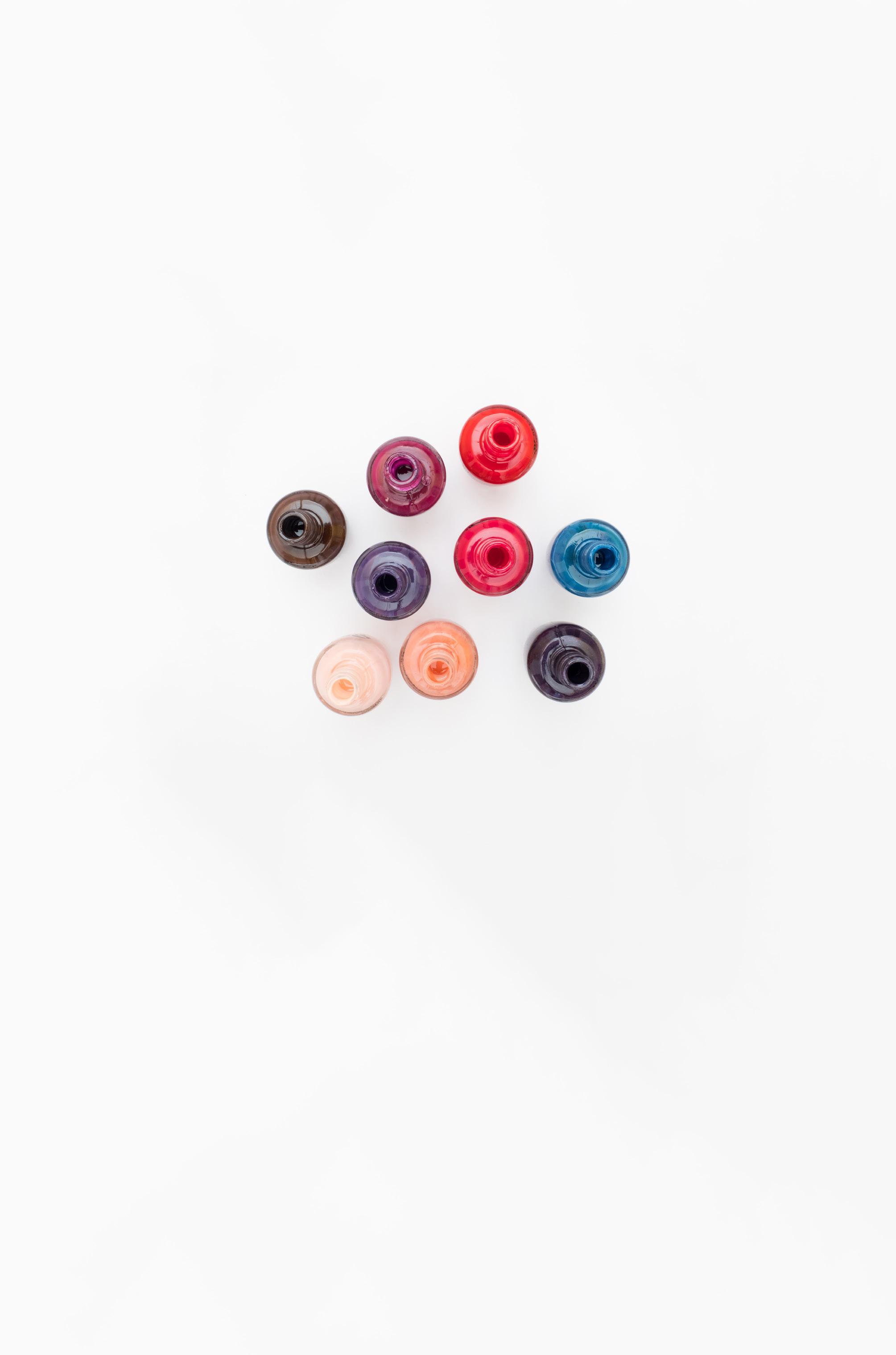
POLISH’S OVERARCHING APPEAL
Today, nail polish clearly retains its overall appeal and star appeal. Marilyn Monroe’s preference for red and coral manicures turned Revlon’s “Cherries a la Mode” and “Hot Coral” into must-have items during the ’50s and beyond (in 1999, luxury auction house Christie’s sold the starlet’s beauty case – containing the two polishes, among other items – for US$200,000 to an anonymous buyer). Diana Ross’s long red nails were coveted in the ’60s and, according to Orly, its nail brand founder Jeff Pink started the craze for white-tipped French manicures in 1975. But it’s not just popular among women: from the ’70s onwards, men’s nail polish use has been commonplace, especially with celebrities.
6 IN MAGAZINE MARCH / APRIL 2023 LOOKING GOOD
Photos by Dan Cristian Pădureț on Unsplash
During his Ziggy Stardust days, David Bowie wore glowing teal nails, while Aerosmith’s Steven Tyler was stylish in black and white stripes. Members of the band KISS, along with ’80s pop rocker Billy Idol, were seen to favour well-manicured black tips. Kurt Cobain’s chipped red polish and Dennis Rodman’s metallic blue nails helped define the ’90s, while Johnny Depp’s cobalt and Seal’s green fingernails became overnight fashion statements in the aughts.
“More men [have worn and] wear polish than you think!” says Erica Nieuwenhuis, chief executive officer for Bio Sculpture Canada Inc. in Burlington, Ontario. “We just notice what artists are doing more because it is reported on.”
NAILING THE HEADLINES
Stories about UK singer-songwriter-actor Harry Styles’ and Puerto Rican rapper Bad Bunny’s preference for black manicures continue to make headlines. Last year, Vogue magazine heralded Canadian singer Shawn Mendes and singer Anderson .Paak for sporting matte navy blue and black-and-white manicures, respectively, at the 2022 Met Gala in New York City. Additionally, the style bible has favourably shared paparazzi snaps of Jared Leto in multi-shades of yellow, orange, pink and purple; Brad Pitt in varying blue, black and burgundy hues; Brooklyn Beckham in classic red; Troye Sivan in baby blue; and Joe Jonas in a combo of metallic gold with black.
“We loved rapper Bad Bunny’s set of long lime nails photographed on the 2019 Billboard Latin Music Awards,” affirms Nieuwenhuis. “Earlier, Bad Bunny was also in the news because a salon in Spain refused to perform a manicure because he is a man, drawing muchneeded attention to gender-based discrimination.”
REDEFINING COLOUR
This kind of attention (albeit negative), combined with increased inclusion, is helping to disintegrate long-held beauty and grooming constructs. High-profile women’s magazines such as Glamour, Fashion and Harper’s Bazaar have forever altered the way women view and wear nail colour by featuring boy-like dark shades that are now cult favourites: Chanel’s deep wine “Vamp,” which launched in 1994, followed by OPI’s black purple “Lincoln Park After Dark,” which launched in 2005.
While these publications continue to wield influence and power, social media influencers are simultaneously playing a role in creating change by challenging and dismantling the overgeneralization of characteristics, differences and attributes the cosmetics industry has used to target and market to certain groups based on their gender. Now, entire Instagram accounts that solely feature men with manicures are flourishing, as is the hashtag #boynails, which has 16.4 million views and counting on TikTok.
Household social influencer names like the US’s James Charles, the UK’s Lewys Ball and Canada’s Kendall Gender continue to forge the virtual way on Instagram, YouTube and TikTok with their thoughtfully informative, frequently funny and, more importantly, all-inclusive posts and videos about cosmetics products and services, what’s hot and what’s not, how-to and when not to wear, and more. Rather than perpetuate that pink is for girls and blue is
for boys, these disruptors create awareness and acceptance about gender fluidity through the universal benefits of self-care, the joy of pampering and the fun of playing with fashion and wearing cosmetics…complete with a nail varnish or two.
This visibility has additionally advanced nail polish’s versatility, not simply as a colourful and fashionable varnished mark, but also as an avenue of equal opportunity. In 2020, rapper Lil Yachty founded Crete, a company under which he launched, in mid-2021, a highly anticipated line of gender-free, pen-shaped nail paints in shades of greys, blacks and whites, to name a few. The company has since folded, but musicians Machine Gun Kelly, Tyler the Creator and Harry Styles have since picked up the colourful brush with their online e-commerce-based companies featuring their nail polish, UN/DN LAQR, Golf le Fleur and Pleasing lines, respectively.

VERSATILITY IN VARNISH
“Diversity and inclusion can save lives,” says Kenneth Wyse, who is known as Kendall Gender by their 86,300 followers on Instagram. “I think that being visible in our differences can help solve a lot of questions and anxieties for people. It makes you feel less alone when you see someone like yourself reflected in the advertisements you consume.
“Brands are expanding the typical faces you are used to seeing and acknowledging the power of diversity,” adds Wyse. “I’m currently working with Annabelle Cosmetics to launch the Annabelle Cosmetics Beauty for Everyone Community, Canada’s first-ever diversity and inclusion beauty collective, creating space for 2SLGBTQIA+ and BIPOC community representation to foster inclusivity. Gone are the days of the carbon copy super models –now we are embracing diversity and real people!”
Some Of Our Favourite Nail Polish Names
“Bang On,” Butter London, teal blue-green
“Below the Belt,” Essie, white
“Bette” (as in Midler), Bio Sculpture, Biogel, slate grey
“Boys Be Thistle-ing At Me,” OPI, deep purple
“Cake Hole,” Butter London, bold pink
“Cop-per Feel,” Cheeky, copper
“Double-Fisted Fuchsia,” CHI (Ceramic Nail Lacquer)
“Feathers & Flesh,” Smith & Cult, cappuccino
“Fruity Tooty,” Bio Sculpture, Biogel, orange red
“Jealous Boyfriend,” Sally Hansen, dark emerald green
“Jizz,” BleachBlack, silver
“Jinky Pink,” Bio Sculpture, Biogel, bright bubblegum pink
“Like a Virgin,” Deborah Lippman, white creme
“Pussy Galore,” OPI, shimmering baby pink
“Sashay My Way,” Orly, sparkly gold
“Show Us Your Tips,” OPI, violet blue
“Size Matters,” Essie, brown red
“Taupe-less Beach,” OPI, taupe
“Towel Boy Toy,” China Glaze, indigo blue
“Yank My Doodle,” OPI Fall burnt orange
7 ADRIANA
lifestyle-magazine
writing about
LOOKING GOOD
ERMTER is a Toronto-based
pro who has travelled the globe
must-spritz fragrances, child poverty, beauty and grooming.
MAKING BETTER MISTAKES
Make mistakes. Make more mistakes! You might find or do something great by mistake
 By Luis Augusto Nobre
By Luis Augusto Nobre
Although I have a good memory for places, faces, dates, numbers and facts, I keep forgetting the topics and ideas I would like to write about or even talk about with a friend in a warm conversation. My mistake, but I am not usually sorry at all. Despite missing some great ideas, this lack of memory could be helpful. Revolving my thoughts works as a brainstorming session and gives me possible new ideas.
My solution is not perfect, but here and there, I take vague notes on my phone for future opportunities to explore them. It could be a word, a sentence, a quote from a book or some movie dialogue. However, I have difficulty figuring out which topic they are related to from my previous thoughts. Another mistake. My notes are just a compilation of words waiting to be placed together in a puzzle and make sense. In the case of this piece, the last sentence was
the inspiration. So I hope you can hold your anxiety until the end, or you will read it with a spoiler and a lesson.
Being anxious or afraid can lead us to commit errors. How often have we put our future on hold, waiting for the right moment? We will eventually miss the timing when the chance is in front of us, punishing ourselves later on with thoughts like “I should have done differently.” More mistakes to add to our growing list, and we will never know if the missed step would have been the perfect solution or a total disaster.
I am trying to create an analogy about mistakes, extending to attitudes and decisions. Time and my (past) behaviour has given me some expertise, as my regret list always grows when I reflect on my past and missing opportunities. I do acknowledge that
8 IN MAGAZINE MARCH / APRIL 2023
PRIDE AT WORK
Photo by Barbara Barbara on Unsplash
all my mistakes have been changed into learned lessons, taking me to this particular moment in life. My tendency is to hold as many of my thoughts and reactions as possible, slowly digesting them for the perfect moments or the right reasons, but they don’t always come true. In the end, we will interpret it as the right move or a big mistake.
Despite the interpretation, you and I should use our wisdom to take risks in a time frame benefiting us and our journey so that it won’t become another regret. Be aware that I am not suggesting anything against the law or that could hurt someone – just pushing ourselves to try and grab that experience.
Here is an example of a huge mistake that gave me one of the biggest lessons in my life. I kind of knew that I wouldn’t be a full-time straight person, and I tried to live a life being afraid of my authentic self. It wasn’t directly forced, but the cultural and familiar context imposed and led me to swallow my desires, not living them in fullness.
Because I was so afraid of facing who I was, I created boundaries and barriers to build healthy relationships with people who could have become great friends or mentors. One was an extraordinary and openly gay professor in my undergrad program. I could never become close enough to him because of my panic that he would see my true self. Instead of having an excellent professor-student relationship, I avoided him as much as possible, and the fantastic professor adored by everyone was never a reality to me.
Some bad decisions will taste bitter, and the bitterness in my mouth from this episode is a constant reminder to me of learning the hard way. At that time, I wasn’t as confident as I am now. Many more mistakes happened, and they will continue happening, but I want to have them writing my path and working as stepping stones.
Now as a very proud queer person, I don’t hide who I am despite the challenges of always coming out. Sometimes, those situations are just a great opportunity to reinvent ourselves. In the book Love in the Time of Cholera (which I highly recommend), the Colombian writer and Nobel Prize in Literature winner Gabriel García Márquez wrote that “human beings are not born once and for all on the day their mother gives birth to them, but that life obliges them over and over again to give birth to themselves.” This process is to overcome our mistakes and improve from there, being the gas we need as a kind of internal combustion to move us forward.
It is how we see things. We can even use someone else’s bad decisions to make changes because they impact our lives directly. Social movements see the inequities and fight for a more inclusive society. Members of our 2SLGBTQIA+ communities are also aligned, demanding respect for who we are and working on our rights. The changes have already been happening over the years: civil marriage, adoption, employment and protection rights, conversion therapy ban, blood donation, and more. Let’s update inadequate and obsolete practices we see, to benefit ourselves and the people around us.
Too naive? I believe in the goodness inside us despite being a witness to and knowing all the atrocities committed by some human beings. We can do more and better for ourselves, even when it is a reasonable mistake. History has several examples that make science and technology advance, for example. Those “issues” became the solution to a problem unexpectedly. Coincidence or not, we could see them as simple doses of serendipity.
That may be why serendipity is one of my favourite words – I even have a tattoo of it using my handwriting. Finding or doing something great by mistake is fascinating and intimidating too. Steps need to be taken. Courage and boldness to try a new thing for the first time are the keys to transforming the situation in favour of the majority, benefiting more people and doing a good change. It is not easy to overcome our fears and be in the spotlight; however, it is rewarding to imagine that people in the future will have a better life because of our simple acts in the present. A classic butterfly effect, sending the winds of change.
For those who have stayed with me until now and want to take risks: Make mistakes. Make more mistakes. Make better and better mistakes! You never know: you might find or do something great by mistake.
9
PRIDE AT WORK LUIS AUGUSTO NOBRE is the senior communications coordinator of Pride at Work Canada/Fierté au travail Canada, a leading national non-profit organization that promotes workplace inclusion on the grounds of gender expression, gender identity and sexual orientation. For more information, visit prideatwork.ca.
“Human beings are not born once and for all on the day their mother gives birth to them, but that life obliges them over and over again to give birth to themselves.”
— Gabriel García Márquez LoveintheTimeofCholera
LGBTQ+ Organizations & Individuals Report Increase In Hate On Twitter
Twitter under Elon Musk has failed to protect from online violence and abuse, according to a new survey
According to a new survey conducted by GLAAD, Amnesty International and the Human Rights Campaign, LGBTQ+ organizations have recently reported an increase in hate on Twitter.
About 60 per cent of respondents reported that they had experienced an increase in abusive and hateful speech on Twitter since Elon Musk acquired Twitter in October 2022 and took over as CEO. The other 40 per cent reported that they had experienced the same level of abusive and hateful speech as before. None of the survey respondents reported a decrease in abusive and hateful speech.
The survey, which only included accounts with more than 10,000 followers, was intended to capture a “snapshot” of the social media landscape in the months following Musk’s $44 billion takeover. Musk quickly reversed many of Twitter’s content moderation decisions after purchasing the company, including some high-profile cases that set an ominous precedent for the platform’s many LGBTQ+ users.
“Twitter considers itself a ‘common digital town square,’ yet it’s a town square where LGBTQ+ voices are all too often shouted down and silenced by constant hateful speech and harassment,”
said Michael Kleinman, senior director of technology and human rights at Amnesty International USA. “It’s disappointing, to say the least, to hear that the problem of hateful and abusive speech on Twitter is only getting worse.”
When respondents tried to report the abuse to Twitter, 88 per cent said that Twitter took no action to mitigate or take down the reported content.
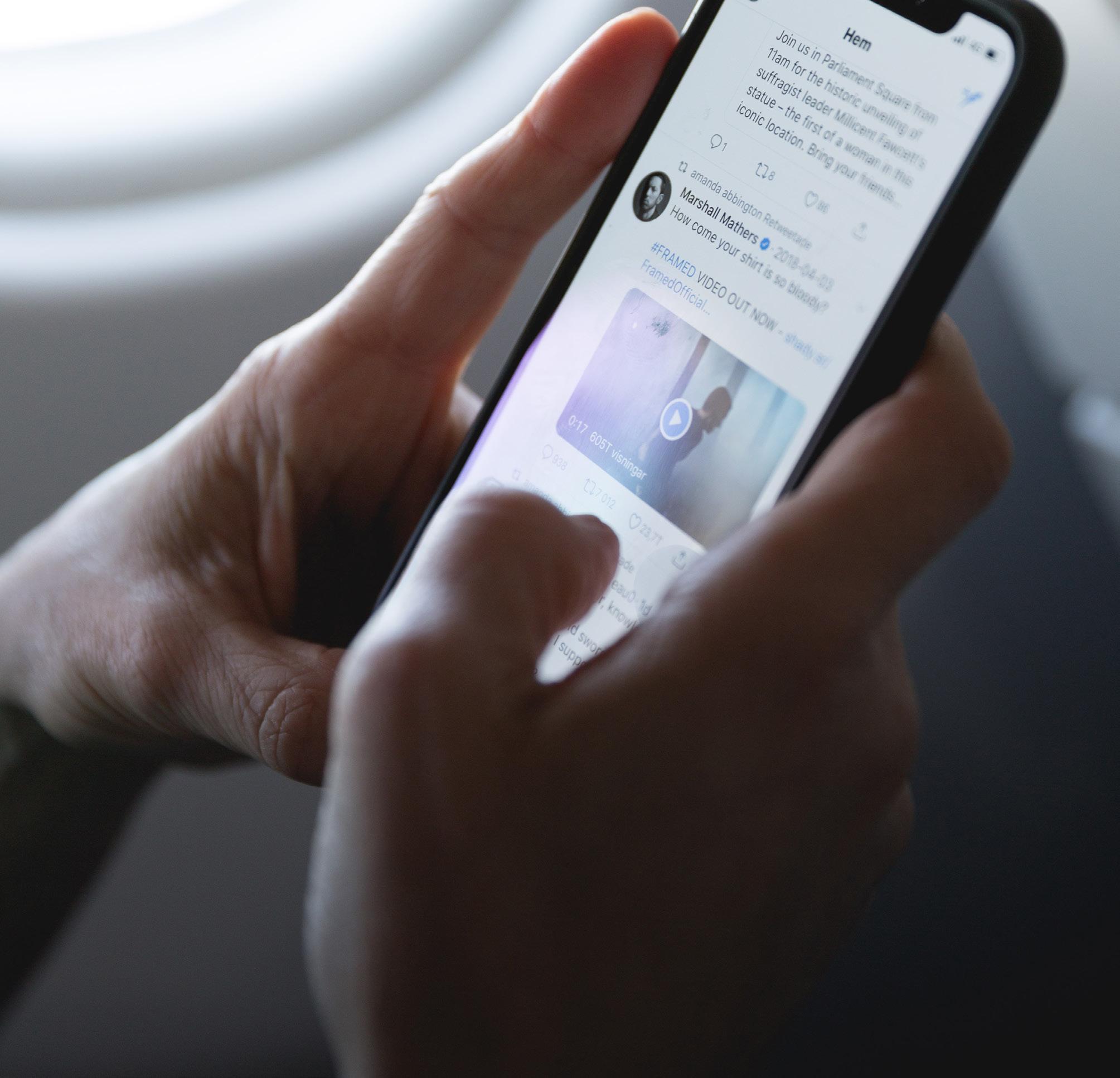
The study also discovered that Twitter’s current anti-hate speech measures are insufficient, as the platform is still used to spread hateful and discriminatory messages towards the LGBTQ+ community.
Amnesty International is calling on Twitter to take stronger measures to combat hate speech on its platform in response to these findings. The organization is urging Twitter to step up its anti-hate speech efforts and take concrete steps to protect marginalized communities, including the LGBTQ+ community, from harmful and abusive speech.
“We urge Twitter to do the right thing and provide a platform free of hate,” said Kelley Robinson, president of the Human Rights Campaign.
10 IN MAGAZINE MARCH / APRIL 2023 ONLINE
Photo by Marten Bjork on Unsplash
Break Those Bad Pandemic Habits
Adopted some unhealthy habits through the past few years? Break them now!
By Karen Kwan
The past three years have not been easy. With several lockdowns forcing us to live isolated from friends and family, many of us turned to whatever we could grab onto when it came to finding comfort, entertaining ourselves and making it through one day at a time. Unfortunately, many of these newfound habits and pastimes are not so great for our wellness. Now that most of the world has opened up and many of us are living as we did before – including going back into the office and being able to socialize and take part in our old pastimes – it’s time to kick those less-than-healthy pandemic obsessions and routines to the curb.
Drinking excessive alcohol?
With so much time spent cooped up at home, many of us indulged in alcohol more frequently at home through the past few years (and chances are your serving size is more than a bartender would pour for you). Canada’s new drinking guidelines, released in January, recommend restricting alcohol consumption to no more than two drinks per week.
How to cut back on drinking: If your consumption isn’t a problem and you’re just looking to rein in your consumption a bit, a simple way is to find satisfying beverages to replace your boozy ones. The non-alcoholic beer choices have exploded (try Partake and Athletic Brewing, to name just two), and if you put some effort into making cocktails with non-alcoholic spirits such as those from Seedlip, you won’t feel like you’re missing out by limiting yourself to two drinks per week.
Addicted to screen time?
With much of our work and social lives switching to virtual, and spending more time at home, being on your phone or tablet all the time has perhaps become as natural as breathing. But not only does excessive screen time prevent you from living in the moment, it can have a negative impact on your mental health. Plus, the light from your screen can disruptive your zzz’s by disrupting your body’s release of sleep-inducing melatonin.
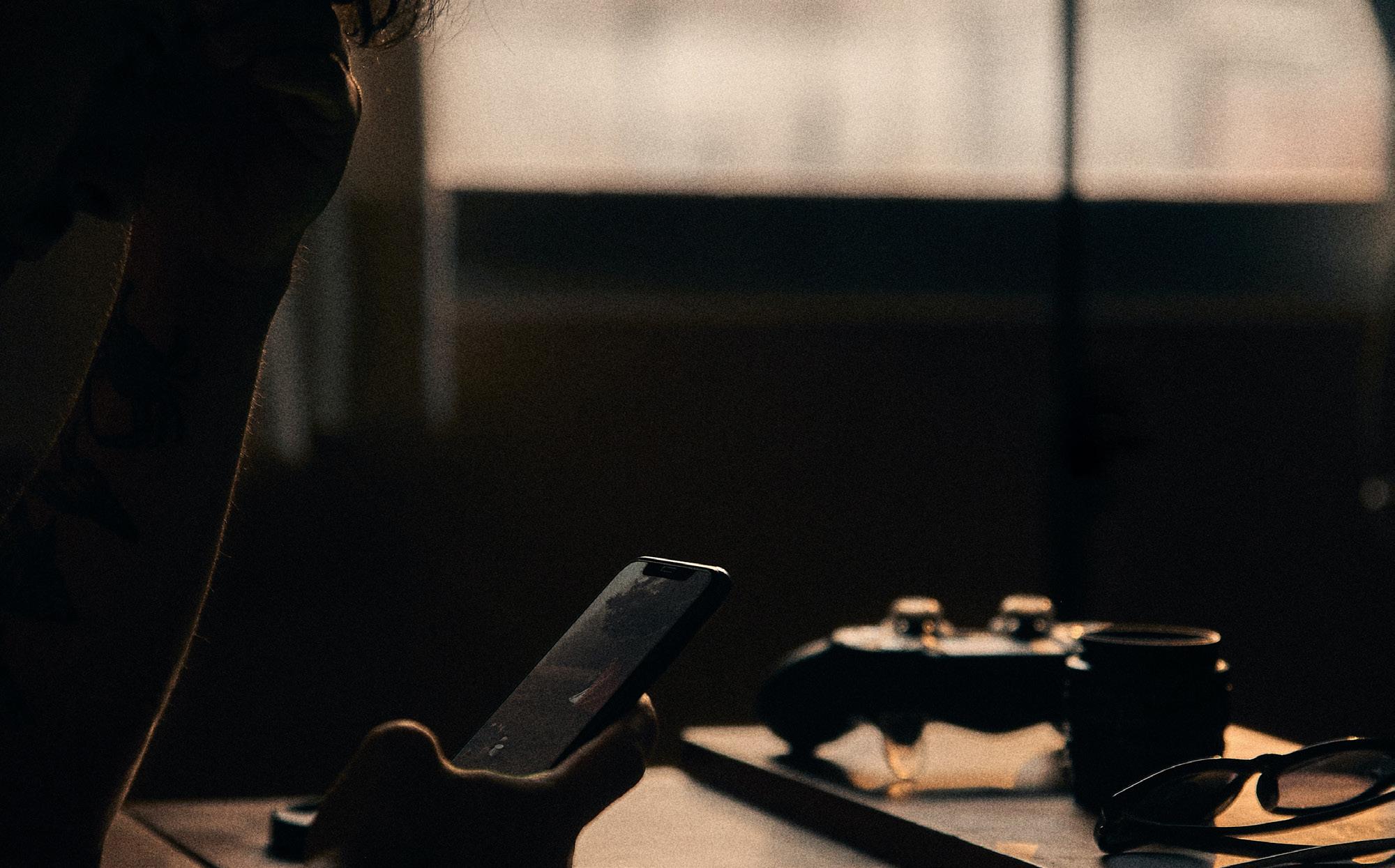
How to reduce your screen time: Plan to participate in something fun and challenging, so that you’re motivated to put that phone down – perhaps it’s a pottery class or learning a new language. Also, set an appointment in your calendar as your no-screen time cut-off. If you time it for 8 pm every night, for example, designate a spot tucked away from easy access so that you aren’t tempted to pick it up until the morning.
Living a sedentary lifestyle?
With gyms closed and lockdowns keeping us indoors at home, our active lifestyles fell to the wayside. Keep in mind that working out at home isn’t for everyone.
How to get active again: Thankfully, gyms are open again and we can also get outdoors to get in a good sweat session. If you’re finding it hard to get off the couch, get inspired by trying something new to you. You might try pickleball, the fastest-growing sport in North America; or, instead of catching up with a friend over drinks, meet up at a sauna and ice bath spot (such as Toronto’s Unbounded Well or Othership) and catch up over some contrast therapy.
Eating an unhealthy diet?
Gaining weight through the pandemic was common. The world’s circumstances had many of us turning to comfort foods full of fat, sugar and salt, compounded by the fact that we were living less active and more stressful lives.
How to eat a healthier diet: Skip the packaged snack food aisles at the grocery store. If you don’t have junk food easily accessible at home, you’ll be less likely to consume it. With that in mind, delete your food-delivery apps from your smartphone; the idea is to make it more difficult to order fast food so that you’re limited to cooking and eating the fresh ingredients you’ve stocked up on. That said, allow yourself to enjoy a portion-controlled serving of your favourites so you don’t feel deprived (deprivation can increase your cravings, leading you to overeat). Have a small scoop of gelato for dessert if that’s your go-to sweet, or enjoy a glass of your favourite red wine as an occasional treat.
11 HEALTH & WELLNESS
KAREN KWAN is a freelance health, travel and lifestyle writer based in Toronto. Follow her on Twitter at @healthswellness and on Instagram at @healthandswellness.
Photo by Jorge Fernández on Unsplash
WHAT IT MEANS TO BE A WOMAN LIVING WITH HIV
We talk to PASAN about the Positive Women’s Leadership Project (POWER Project) and the organization’s work to empower and improve the lives of those identifying as women in the HIV community

According to the Canadian AIDS Society, women make up a significant proportion of people living with or at risk of HIV/AIDS in Canada – about one in five people living with HIV as of 2014 was female. In fact, an estimated 16,880 females live with HIV (including AIDS), representing 22.4 per cent of the national total.
All women have risk factors for HIV infection, but women who belong to socially and economically marginalized populations face a number of interconnecting determinants of health that adversely impact their risk for HIV infection and their experiences accessing diagnosis, care, treatment and support. African, Caribbean and Black women, Indigenous women, trans women, women who use drugs, women who experience violence, and women who are incarcerated are at a higher systemic risk for HIV.
To learn more about the challenges specific to women living with HIV across Canada, we spoke to both Claudia Medina, Program Director , and Amina Mohamed, Women’s Community Programs coordinator, at PASAN. Formed in 1991 as a grassroots response to
HIV in the Canadian prison system, PASAN is a community-based prisoner health and harm reduction organization that provides support, education and advocacy to prisoners and ex-prisoners across Canada. Today, PASAN is the only community-based organization in Canada exclusively providing HIV and HCV prevention, education and support services to prisoners, exprisoners and their families. In addition to individual support services, PASAN conducts HIV prevention education programs in many adult institutions in the southern Ontario region. This program includes a Peer Educators Group, where ex-prisoners living with HIV are educators for current prisoners.
Can you tell us about PASAN and how it supports the HIV community in Canada?
PASAN is a community-based organization that provides advocacy, education and support to prisoners on health issues related to HIV, hepatitis C and harm reduction. We provide health promotion workshops to prisoners in provincial and federal institutions in
12 IN MAGAZINE MARCH / APRIL 2023 COMMUNITY
Photo by HIV in view
Ontario, and provide advocacy and re-integration support to people with lived experience of incarceration in community.
What is the POWER project?
In the fall of 2017, a strategic initiative called the Circle of Care began with agencies such as the AIDS Committee of Toronto (ACT), Black Coalition for AIDS Prevention (Black CAP), PASAN, the Teresa Group and the Toronto People with AIDS Foundation (PWA). A consultation process was facilitated and organized by HIV+ women, which shaped a new project called POWER that reflected the need for a new direction in the provision of services for women. It was defined that HIV+ women would be the leadership of this movement, strengthening the leadership of HIV+ women. POWER supports and engages HIV+ women in key project leadership roles to oversee, guide and implement the program activities. The project is led by a coordinator to oversee the program’s activities through PASAN and five program coordinators from each partner agency.
What are the goals or objectives of the POWER project?
It is a leadership program developed with and for positive women to continue building self-care, self-advocacy skills, personal relationships and community leadership. HIV+ women created a vision to be engaged and empowered leaders in the community, build knowledge and share skills, and be united to challenge stigma, advocate and create a positive woman-centred future. The focus of the key program activities is on amplifying women’s leadership in three different learning settings: forums (in person and online), skills building leadership and self-advocacy workshops. We are also exploring possible development of women-led trainings by and for HIV-positive women.
The POWER project has existed since 2017, and it continues through the support of fund grants from ViiV Healthcare’s Community Education and Services Grants program.
Why do you think International Women’s Day is a particularly important day for women living with HIV?
We define women as all people who identify as women; this is inclusive of cis and transgendered women. International Women’s Day is important for HIV+ women because it is a day that women can celebrate themselves, their personal accomplishments,
Fast facts from Women
& HIV/AIDS Initiative (WHAI):
In 2019, almost 60 per cent of new HIV diagnoses among women in Ontario were in African, Caribbean and Black (ACB) women.
In 2019, 11 per cent of new HIV infections among women in Ontario were in Indigenous women.
• Trans women are 10 times more likely to report having been diagnosed with HIV than other women. Almost 50 per cent of women living with HIV reported having experienced intimate partner violence, according to a 2017 cohort study.
Did you
In Canada, there are fewer than five associations dedicated to supporting women living with HIV, despite the fact that these women make up 22.4 per cent of the national total. The experience of women living with HIV is characterized by unique stigmas, their societal roles as caregivers, their race, and their social and economic status.
Having national supports available for people who identify as women is crucial to improving quality of life, addressing societal stigma, and providing access to quality care and treatment.
You can find more information on how you can support women living with HIV and help reduce stigma in their everyday lives by visiting one of these resources:
• Women and HIV/AIDS Initiative: https://whai.ca
• The CTN: CIHR Canadian HIV Trials Network: https://www.hivnet.ubc.ca/research-categories/women-girls
• Women’s Health in Women’s Hands: https://www.whiwh.com
Canadian HIV Women’s Sexual and Reproductive Health Cohort Study: https://www.chiwos.ca
their identities and their futures. While there have been many advancements in HIV treatment, stigma about HIV continues to be a reality – women still face discrimination and HIV phobia every day. On International Women’s Day, women can celebrate that they can still succeed and accomplish their hopes and dreams regardless of their HIV status. On this day, women can also celebrate their future dreams, as people living with HIV are now living longer due to effective treatment and U=U (Undetectable = Untransmittable).
What is the benefit of having women-centred programs for women living with HIV?
Women living with HIV have distinct social, emotional and health needs. Women need a dedicated confidential space for themselves, as there is no organization that provides services solely to women living with HIV. POWER is a place where women can feel heard, supported and celebrated in their leadership roles in the community. This project encourages peer involvement and practises greater/ meaningful engagement of people living with HIV. POWER also acts as a first stepping stone for women to build on their own skills to obtain employment opportunities in the HIV sector.
How can people learn more about PASAN and the POWER project?
For more information about PASAN, you can visit our website at www. pasan.org, or find us on Instagram at @prisonharmreduction. At this time we are hiring for a new POWER coordinator – you can contact claudia@pasan.org for any questions you may have about POWER
To learn more about PASAN and to access resources, visit www.pasan.org/resources.html.
COMMUNITY
know?
UNDERSTANDING THE HUMANITARIAN CRISIS IN AFGHANISTAN
Why Canada needs new refugee programs to help LGBTQI+ people at risk
 By Kimahli Powell
By Kimahli Powell
14 IN MAGAZINE MARCH / APRIL 2023 COMMUNITY
Rainbow Railroad’s CEO, Kimahli Powell, with activists Aseer, and Rhiannon Makohoniuk meeting with Sean Fraser, Canada’s minister of immigration, refugees and citizenship
I will never forget meeting Aseer, a trans man who grew up in Kabul. Although he dealt with challenges growing up in a conservative environment, he found community with other LGBTQI+ people at university. But when the Taliban returned to power in Afghanistan, his work as an activist made him a target. He went into hiding and reached out to Rainbow Railroad. We helped Aseer make it out of Afghanistan to a safe house in Pakistan that Rainbow Railroad had helped establish. He shared his story of persecution with me from that safe house on one of two visits I have made since the takeover of the Taliban and the withdrawal of coalition forces from Afghanistan in August 2021. We were eventually able to help Aseer make it out of Pakistan to Canada, where he has continued his activism. He joined Rainbow Railroad and met Sean Fraser, Canada’s minister of immigration, refugees and citizenship, to advocate for increased pathways to safety for LGBTQI+ Afghans.
We didn’t initially intend on being advocates for such resettlement from Afghanistan, especially in the middle of a humanitarian crisis. Rainbow Railroad’s expertise expanded from doing individual case work to responding to crisis situations like Chechnya, Egypt and Uganda. However, engaging in a geopolitical crisis situation like that in Afghanistan was a different level of engagement for us as an organization.
However, in some important ways, we didn’t have much choice. As coalition forces prepared a complete withdrawal, it became clear that the Taliban would take control of Afghanistan, and on August 13, 2021, the Government of Canada released a statement introducing a special program to bring at-risk Afghans to Canada. This special program included “women leaders, human rights defenders, journalists, persecuted religious minorities, LGBTI individuals, and family members of previously resettled interpreters.” Immediately following this announcement, which explicitly mentioned the LGBTQI+ community, our requests for help from Afghanistan skyrocketed. From January to August 2021, Rainbow Railroad received around 50 requests for help from Afghanistan. Between August 13 and August 31, we received nearly 500. Since then, more than 6,000 people have reached out to Rainbow Railroad from Afghanistan, seeking assistance.
During that crucial period, and leading up to today, we have heard reports of deeply troubling violence and persecution towards LGBTQI+ Afghans.
Details of these accounts are harrowing and are summarized in a recently published report from Rainbow Railroad. Individuals reported surveillance from friends and family, beatings and other forms of violence in private and public settings, and an environment of complete impunity for members of the Taliban. Many LGBTQI+ Afghans are still in hiding, unable to be in contact with their loved ones because of the risks they face.
This is why we needed to respond, and why we needed to advocate to the Government of Canada to step up and help the LGBTQI+ community cited in the government’s announcement. Rainbow Railroad functions primarily as a service-providing organization, but time and time again, when faced with a crisis situation, we have found that governments have limited tools when they need to respond quickly. The lack of a proactive response strategy
generally leads to our advocacy, because of the risks faced by individuals like Aseer.
Since its establishment as a charity, Rainbow Railroad has been dedicated to finding new pathways to safety for at-risk LGBTQI+ people, and in this effort we have continuously asked for the Canadian government’s support. In the lead-up to the federal election in September 2021, Rainbow Railroad issued a three-part call to action to the Canadian government, which specifically outlined the need for this kind of partnership.
The situation in Afghanistan, and the lack of routes to safety, meant we needed to further these advocacy efforts. In May 2022, Rainbow Railroad launched the #SafeWayOut campaign, which garnered thousands of signatures on a petition in support of our efforts to help LGBTQI+ Afghans at risk. I also had the opportunity to directly address Canada’s Special Parliamentary Committee on Afghanistan. These interventions have seen some success; in December 2022, the Canadian Government announced a partnership with Rainbow Railroad that will bring 600 Afghans to Canada.
But while Rainbow Railroad has successfully helped a significant number of people in the region, the requests far outweigh the number of people we have been able to help. A flexible, LGBTQI+-specific refugee stream that can be responsive to international crises would empower our organization to meet the growing need we are facing.
In February 2022, we watched as Russian forces invaded Ukraine, and another major humanitarian crisis began to unfold that affected the LGBTQI+ community. The reality is that during a time where there are more than 100 million displaced people around the world, we are constantly faced with numerous global challenges. When the next international crisis hits, we need to be prepared to respond to new requests for assistance, and to maintain our ongoing work. This means Rainbow Railroad needs proactive support from governments that are willing to take a leadership role in supporting LGBTQI+ refugees.
When talking about his new life in Canada, Aseer said: “I feel safe here finally. After 26 years, I feel safe.” Every LGBTQI+ person deserves to feel safe, and to live a life free from persecution. Rainbow Railroad needs allies in the fight for global LGBTQI+ freedom, and we’re asking our government to step up.
15 COMMUNITY
KIMAHLI
POWELL has a wide range of experience in the not-for-profit sector and has spent more than 20 years advocating for social justice, youth, and arts and culture. Since joining Rainbow Railroad as CEO, Kimahli has led the organization through transformational growth. Kimahli holds an honorary Doctor of Laws from the University of Victoria and was listed in Out Magazine’s Out 100 profile of influential LGBT people in 2018.
“ IN MAY 2022, RAINBOW RAILROAD LAUNCHED THE #SAFEWAYOUT CAMPAIGN, WHICH GARNERED THOUSANDS OF SIGNATURES ON A PETITION IN SUPPORT OF OUR EFFORTS TO HELP LGBTQI+ AFGHANS AT RISK.”
FINDING
Strangers AMONG A GROUP OF Safe Space

Sharing my struggles, dreams and deepest secrets with people I’ve never met IRL has been a game-changer
By Jumol Royes
16 IN MAGAZINE MARCH / APRIL 2023
Photo by Pexels/Kindel Media
PERSPECTIVE
What am I getting myself into?
That’s the thought running through my head as I sit at my desk with my laptop, preparing to dive head-first into the unknown.
My anxiety is on high alert, but I decide to take a leap of faith and click the Launch Meeting button on the Zoom app. Within seconds, I’m transported into a virtual meeting room. Keeping my video off, I sit back and watch as other participants slowly start to trickle in, their names and faces populating the small boxes at the top of my screen.
The group begins with two friendly co-facilitators welcoming everyone and walking us through the comfort agreement, a set of agreed-upon guidelines meant to protect the safety and comfort of the group.
Introductions come next. We go around popcorn style and when it’s my turn, I summon the courage to turn on my video and share my name, pronouns, identity and how I’m feeling. I receive a heartfelt response from the group and begin to feel more at ease.
Maybe
I’m in the right place after all.
With introductions out of the way, it’s time for sharing. We’re each allotted uninterrupted time to speak about whatever is on our hearts and minds. Sharing is optional but gently encouraged. When each person is finished speaking, they can choose to receive person-focused feedback from the other participants, allowing them to feel the full support of the group.
Going into this, my approach is to just be a passive observer. I’m not sure I’m ready to divulge parts of my life story to a group of total strangers whom I’ve never met in person and know absolutely nothing about. I’m like an onion; I have many layers that must be peeled back…slowly. But the more people share about their poignant and deeply personal struggles, and are supported, the more my walls come tumbling down.
Before I know it, it’s my turn to share, so I lean into being vulnerable, and perhaps a little bit brave.
I suddenly find myself speaking freely about complex and complicated feelings and the beautiful and heartbreaking reality of moving through the world as a gay man in Black skin. I even surprise myself when I get a little emotional towards the end of my share and shed a few tears. Crying on camera in front of people I don’t know is something I rarely, if ever, do.
I’m wholly unprepared for the group’s reaction. They shower me with collective care, comfort, concern and words of encouragement, wrapping me in their virtual embrace and validating without judgment everything that I’ve shared.
I feel held, safe and supported. I feel seen.
I really couldn’t have asked for a better first experience than my recent experience participating in a local BIPOC (Black, Indigenous and People of Colour) peer support group for the
purposes of finding solidarity and learning more about our shared lived experiences.
The benefits of support groups
Peer support groups for mental health started to gain traction back in the 1960s and ’70s. They’ve become more prevalent in recent years, thanks in part to the proliferation of technology that makes virtual support groups possible. These groups provide safe or safer spaces – because no space can always be completely safe – for people with shared lived experiences to come together to support one another and feel connected and understood.
In her book, Atlas of the Heart, researcher and storyteller Brené Brown says, “This need for connection, for storytelling and story catching, is what makes group therapy and support groups such powerful healing experiences for those who are grieving.”
Brown found that three foundational elements of grief emerged from her research: loss, whether due to death and separation, or less tangible losses like the loss of normality, the loss of what could be and the loss of what we thought we knew about something or someone; longing or an unconscious yearning for wholeness, understanding, meaning, or to regain or touch what we have lost; and finally, feeling lost, the feeling that accompanies trying to reorient our physical, emotional and social worlds when we experience grief.
If I’m being honest, grief is probably what drew me to a peer support group in the first place.
I was grieving the loss of who I once was, who I thought I was supposed to be, and the friendships and relationships I’d outgrown that no longer served me. I was longing to be seen and witnessed, to be heard and understood, and to give myself permission to honour all the parts of myself, because there are no bad parts. I was trying to figure out how to navigate life’s thresholds – that space between known, familiar territory and the unknown, uncharted wilderness – while seeking community and deeper connectedness.
I now attend the group regularly and it’s been a real game-changer for me.
I show up each week and feel comfortable sharing my struggles, dreams and deepest secrets, knowing that I’ll be met with empathy and grace. I don’t have to worry about code switching or self-editing to make non-BIPOC folks feel more comfortable. We hold space for each other to come just as we are, with all our big emotions. We get each other, we see each other, we relate to each other’s histories and lived realities. We share collective wisdom. Their stories are my stories, and my stories are their stories, too.
I dream of a world where safe spaces exist for all Black folks, LGBTQ2+ folks, for everyone, everywhere. But that isn’t the world we live in. At least not yet. Until that day comes, I’m grateful to have found safer space among a group of perfect strangers.
Come to think of it, they’re not strangers anymore. They’re more like chosen family and some of my biggest supporters.
17 PERSPECTIVE JUMOL ROYES is IN Magazine’s director of communications and community engagement, a GTA-based storyteller and glass-half-full kinda guy. He writes about compassion, community, identity and belonging. His guilty pleasure is watching the Real Housewives. Follow him on Instagram @jumolroyes.
CAN BRING QUEER FANTASY TO LIFE
A queer exploration through role-playing games
By Rowan O’Brien

Although the pandemic kept us physically apart from our loved ones, I was lucky enough to reconnect with old friends during my newfound free time. Inspired by Dimension 20, an actual-play Dungeons & Dragons show that I binged to fill the endless empty days in early 2020, I sent an inciting message to my Dungeon Master (DM) from elementary school: “We should do a Zoom D&D sesh!”
If you spent any time on TikTok over the past three years, you may have noticed that I am not the only one who reinvested in my nerdy interests. In fact, there was a Dungeons & Dragons renaissance as people searched for a weekly activity that didn’t require them to leave their homes. According to a CNBC article, Dungeons & Dragons sales jumped 33 per cent in 2020 and the revenue for the creators, Wizards of the Coast, rose 24 per cent.
As the pandemic forced us to spend more time alone with our thoughts than we normally would (or would like to), another phenomenon started popping up on social media. A lot of people were realizing they were queer and trans, and others were coming out again, for a second or third time. Bumble actually conducted a survey and found that at least 14 per cent of their users’ sexual preferences have shifted since 2020.
Based on this data, it looks like the pandemic led to a spike in two of my favourite things: Dungeons & Dragons, and being gay. In fact, these two passions of mine often go hand in hand, as queer people have flocked to Dungeons & Dragons like wyverns to a flame. Playing a tabletop role-playing game (TTRPG) is a great
way to explore gender and sexuality, whether intentionally or by happy accident, as it was with me.

When my friend group started our D&D journey as a bunch of middle school goofs, we predictably turned into a party of “murder hobos” – a term for a group that robs and murders their way through the game. One of the things that my character loved to steal was hearts, and she collected as many husbands as possible. As time went on, however, I became more comfortable wooing the women NPCs (non-player characters) that our party ran into – honestly, my D&D characters are still better at flirting with hot ladies than I am! I soon had as many wives as husbands in my half-elven polygamous marriage.

At the same time, I was repressing a hardcore crush on a close friend. Through my D&D character, I was able to act on the feelings I was having…albeit in a very campy and overexaggerated way. I can tell you first-hand that playing TTRPGs is a great outlet for emotions that you have buried, and your character may eventually become your stepping stone to realization and further exploration.
Kris, a fellow player, had a similar experience to mine, saying, “It was a running joke in my party for years that in every campaign, I’d manage to seduce and/or marry the most powerful woman in the game. It took me a while to realize that wasn’t a coincidence.”
Using role-playing as a therapeutic tool allows you to explore situations and emotions without putting yourself in a physically
18 IN MAGAZINE MARCH / APRIL 2023 GAMING
Photo by S L on Unsplash
compromising situation, as well as having the extra safety feature of being able to stop the scene whenever you want. It stands to reason that whether D&D players mean to or not, they are able to confront difficult emotions through their own dramatic allegories in the game. There is even a community-wide joke that DMs are unpaid therapists for their players.
holy – place, you can check your anxieties at the door and push the boundaries of your introspection with the support of your party.
My first D&D party was the lovechild of my elementary school friend group. By Grade 7, we had already scattered across Ottawa to different middle schools and, once in high school, we had become a sort of extended family, loving each other from afar and congregating once or twice annually around holidays. At the same time, queerness wove its way through our group, starting as a slow trickle that broke into a current pulling us all along as we each came into our identities over the years. More than a decade later, a group of weird gender-non-conforming kids had grown into a queer found family, once again playing weekly Dungeons & Dragons.
Recently, one of my friends, Lev, realized that the gender identity and pronouns of their character weren’t feeling right to them. While considering how to alter the storytelling to reflect this, Lev came to realize that the gender feelings their character was having were actually a reflection of their own. “I didn’t really make the connection at the time but in retrospect, that was very much when I had started thinking about my own gender identity again…and I was imagining it playing out in the game like I wanted it to go for myself.”
Not only can role-playing guide you towards self-awareness, but a lot of people take a more intentional approach towards their character build, incorporating an aspect that they would like to explore, such as pronouns or same-gender romance, as a way to simulate these experiences. With this tactic, you can also use your character as a human (or elf or orc) shield from any suspicious fellow players who wonder how much of yourself you’re pouring into your character. “My character is the one who wants to tongue the hot barbarian, not me.”
One example of someone who consciously set out to explore through D&D is Arden, who says, “For me, tabletop RPGs gave me a place to take parts of myself from deep inside and pull them out and accentuate them. One thing I found really helpful was just having a character with a name I wanted to try. It helped me so much with finding something I liked to be called. I struggled with that for years but after a couple [of] characters, I found one that fit.”
Dungeons & Dragons is the perfect platform to try out things that may seem scary in real life because many, if not most, D&D campaigns take place in high-fantasy settings. The beautiful and intense world you find yourself in can make the queer elements of your story a lot less conspicuous by comparison. Who cares that the half-elf princess is crushing on her handmaid when an ogre assassin is hunting you down?
Another reason that queer people congregate around D&D is that a core element of the game is the adventurers becoming a “found family,” a trope well known and loved among our community. Like a self-fulfilling prophecy, the folks that make up your D&D party often become as close-knit in real life (if you weren’t already besties to begin with). Because the D&D table becomes such a safe – almost
The connection between queerness and Dungeons & Dragons also permeates D&D media, such as Dimensions 20, the actual-play show I mentioned earlier. If you are ever struggling to find queer or trans representation, take a dive into D&D media, where the characters don’t have to be vetted by producers but come to life the second the DM speaks them into existence. One of the reasons that I love Dimension 20 is because their queer rep is unlike anything I’ve seen in mainstream media, and I can see myself reflected not only in the players but in the ever-growing roster of magical queer characters.
One of the core D&D rulebooks, The Player’s Handbook, even decrees: “You don’t need to be confined to binary notions of sex and gender.” In Mordenkainen’s Tomb of Foes, another official sourcebook, they canonically reveal that “[O]ccasionally elves are born who are so androgynous that they are claimed to be among the blessed of Corellon – living symbols of the god’s love and of the primal elves’ original fluid state of being. Many of Corellon’s chief priests bear this blessing.” This tome also introduced the mechanism called The Blessed of Corellon by which an elven character can change their sex after a long rest. Incorporating these elements into the rules as written solidifies the presence of queerness in the game and the wider D&D community.
This creative freedom was recently threatened when the Wizards of the Coast announced that they would be releasing a new, more restrictive Open Gaming License. The changes they proposed would threaten the livelihood of smaller D&D creators and limit the supposedly limitless gameplay. Thankfully, on January 27, it was announced that WotC had actually listened to their fans and decided to not only reinstate the current OGL but put the Systems Reference Document under the Creative Commons. So now is the time to make D&D as queer as you possibly can! And, yes, that is a challenge.
If you are interested in trying out D&D for yourself but don’t know where to start, Toronto Gaymers host a lot of gaming events, including D&D campaigns that they organize at the Hairy Tarantula (https://hairyt.com). Alternatively, many people post looking for queer-centric adventuring parties through local queer virtual communities, such as Facebook or the Lex app. There is even a specific group on Facebook called Toronto Gaymers: D&D Adventures! where you can find a lot of like-minded folks. Or you can just bribe your best friends with their favourite snacks to start a magically queer adventure with you.
19
GAMING
“DUNGEONS & DRAGONS IS THE PERFECT PLATFORM TO TRY OUT THINGS THAT MAY SEEM SCARY IN REAL LIFE BECAUSE MANY, IF NOT MOST, D&D CAMPAIGNS TAKE PLACE IN HIGH-FANTASY SETTINGS.”
ROWAN O’BRIEN is a queer writer and filmmaker based in Toronto who loves ranting about LGBTQ+ representation in media while creating their own queer stories. Their queer coming-of-age short film Crushed played at the Toronto Youth Shorts festival, and their next short film, City Limits, will be released this year.
NEPO BABIES,
And The Cost Of Drag
When life is more expensive, fewer artists can create, and the creative scene of a city suffers
 By Warren Urquhart
By Warren Urquhart
MARCH / APRIL 2023 DRAG
Life in Toronto is expensive. If you’ve resided in the GTA for a few years, you’ve probably heard that a lot. What might be a more appropriate slogan for the city than “Diversity Our Strength” is “Toronto is the most expensive it’s ever been.”
At least for the past few decades, that’s not hyperbole. In November 2022, the average rent in Canada was past $2,000, a record high. For a year-over-year inflation rate, that’s 12.4 per cent, far higher than Canada’s total inflation rate. A one-bedroom in Toronto is, on average, $2,532 a month. That’s not good for anyone, but it has a specific effect on the plight of the working artist.
When life is more expensive, fewer artists can create, and the creative scene of a city suffers. If you’re an aspiring drag queen, your ability to make a name and express yourself becomes harder with every percentage point the inflation rate goes up. Queens who compete, or have competed, on RuPaul’s Drag Race are at the top of their profession. The journey to get to Drag Race is incredibly difficult, but the difficulty doesn’t end with Episode 1. As is now fairly well known and documented in an excellent Vice article by Rachel Miller, competing on Drag Race can be incredibly expensive.
Miller estimates that Drag Race contestants pay thousands of dollars to compete. For working-class queens like Heidi N. Closet – who says her annual salary before the show was $9,000, and who had only 33 cents in the bank when cameras were rolling for Episode 1 – that’s a lot. Some have to go into debt: Sasha Velour spent $4,000 for her Drag Race run (half of it from savings, the other half a loan from her father). Back up north, Canada’s Drag Race Season 2 winner Icesis Couture spent over $70,000 on her victorious run. On top of the enormous pressure of trying to seize the moment and make a dream your reality, these queens can face extraordinary financial stress
What’s more incredible is that those queens aspiring for RuPaul’s Olympus likely faced extraordinary financial barriers just to get to that point. For those trying to make drag a career, or even a sustainable artistic side endeavour, be prepared to spend money and not make much of it (potentially for years). Tie that to rising rents and a high overall cost of living, and you make a difficult task exponentially more difficult.
Devin Martin is from Chatham, Ontario, and moved to Toronto just a few months ago. He told me he had begun to show a flair for drag in his hometown, where he organized a Charity Pride Month Drag Brunch and performed as Paddy Devine to much acclaim. A self-proclaimed “bar star,” Devin took his energy and stage presence to Toronto, not too long after his event in Chatham. Bartender and server by day, Devin quickly found momentum at night, performing at open stages in the city, and winning a hosting gig (which brought a $75 prize).
As with the vast majority of new drag queens, the ingredients to Devin’s momentum were talent, spending money out of his own pocket and performing for free. Open stage gigs are normally unpaid (aside from audience tips – so audience, get your bills out!), and drag materials can cost a lot of money. Makeup and padding can cost $40 to $100, pantyhose can be $30 to $40, and transportation costs (transit/Uber/gas money) are just some of the usual drag
necessities. In terms of performance preparation, dedicated queens spend hours of their free time; Devin starts getting ready at 6 or 7 pm for a 9 or 9:30 pm performance (often for an unpaid show). And when it comes to learning a song, Devin will listen to it around 30 times. That’s all on top of a day job.
Aurora Matrix has been performing drag for about four years, and is a rising star in Canada’s drag scene. Aurora found momentum through open stages, and now mostly performs for paid gigs along with making high-profile media appearances, such as being a guest on Crave TV’s 1 Queen 5 Queers. Aurora, of course, is no stranger to the high costs of drag. Wigs are $70 for synthetic hair, or up to $500 for human hair, and that’s before styling and colour. Makeup can cost $150, and boots (which can easily wear and tear for someone who, like Aurora, has a strong dance background) are about $150. Aurora is currently managed by Lavender Promotions, but still does a decent amount of unpaid labour for her own career – like managing her social media following of tens of thousands of followers, or taking her own photos for promotional purposes. The hustle doesn’t stop even when you start climbing up the ladder.
It’s clear that drag is hard and expensive at the best of times, but those starting out today do it in a time of relative economic scarcity. In 2021 (before interest rates started to ramp up), the proportion of employed workers in Canada with more than one job was almost two and half times the recorded rate in 1976. People are working more, likely because they have to – and when you have a second job, you have even less time to give a passion project like drag a real shot.
In the midst of these economic anxieties, stories about nepo babies resonate and that’s no coincidence. Specifically, the discourse is centred around those working in the arts – an aspirational career for many. There has been pushback from some of those nepo babies (many of whom are talented and likeable), perhaps under the impression that this discourse is motivated by jealousy. Instead, it is likely motivated by the feeling that opportunities are vanishing for those who aren’t born on third base, merely because they were born in a time of unaffordability. Just as we should do with all forms of art, let’s make sure that drag remains and becomes even more accessible to those with drive and a dream – family ties and financial position notwithstanding.
employer). When he’s not writing or working, he’s drinking coffee or lifting weights (sometimes at the same time!).
21
WARREN URQUHART is a soon-to-be consumer protection
up the licensing process in
none of the opinions expressed represent the
DRAG
lawyer finishing
Ontario (
views of Warren’s
“It’s clear that drag is hard and expensive at the best of times, but those starting out today do it in a time of relative economic scarcity.”
#THEDISH IS SERVED
Adam Barta cooks up an unreal reality show with “Mama June” Shannon and Tan Mom
By Noel Hoffman
Adam Barta is thirsty for television stardom and his new show, #THEDISH, is a tall glass of water. It is a rollicking parody of reality TV that stars Barta along with “Mama June” Shannon from TV’s Here Comes Honey Boo Boo, Tan Mom, and a slew of RuPaul’s Drag Race drag queens, including Detox, Daya Betty, Tammie Brown, Pandora Boxx and Honey Davenport. Even ’80s pop singing sensation Debbie Gibson makes a cameo!
The premise of the show is anyone’s guess. It begins with a rich lady handing Barta a blank cheque to create his own reality show. He enlists his closest celebrity pals to join him in the endeavour, but everything turns to chaos when his so-called friends try to seize the spotlight for themselves in order to stage their own reality TV comebacks.
It is a hot mess, with Adam Barta at the centre of it. We chatted with the accomplished musician turned wannabe TV star from his Florida home.

22 IN MAGAZINE MARCH / APRIL 2023 STREAMING
You’ve been trying to land on a reality show for 10 years?
I have done a lot to inject myself into the reality TV world with the hopes of getting my own show. The first was way back in 2011 when I hosted a pilot for a show called Reality Check. That show had a bunch of personalities like Lindsay Lohan’s dad trying to redeem himself with charity work. Then I got graphic rhinoplasty on We-TV’s Dr. Miami, danced drunk with Teresa Giudice on The Real Housewives of New Jersey – I even got married in the middle of Times Square in New York City with a star from MTV’s Jersey Shore. There was also that horrible audition for RuPaul’s Drag Race…
…And all of the musical duets that went viral…
Those started as a fluke! I was focused on my career as a singer/ songwriter at the time, fresh off a Billboard dance hit, and my manager represented Octomom and Tan Mom. I went to my manager and was like, I have this great music and it’s being recognized, but my fame isn’t growing. She suggested I add Octomom to my next track. I thought about it and was like, wait, this could get mainstream attention – and it did! The viral success of the video led to similar stunts with Tan Mom, several MTV Teen Moms and Real Housewives.
Who was the biggest nightmare to work with?
This may open a can of worms, but Angelina from Jersey Shore was absolutely awful. We were actually good friends at the time! She showed up five hours late to our music video shoot, while about 30 cast and crew waited for her. Later, she pulled some shenanigans I won’t mention, and spread lies about me. She got back on Jersey Shore and then blocked me on all socials, so yeah.
You must have a thing for MTV villainesses. You recently attended Drag Con with Teen Mom Farrah Abraham. Farrah and I go way back. We collaborated on a song; however, we didn’t release it together. I was going to sue her at one point because she released it on her own, without me! But I changed my mind. I realized that was me not focusing on the right things and trying to stay relevant and get attention. That ‘look at me!’ mentality to stay in the headlines doesn’t work in 2023. Today, audiences demand authenticity.
Who is the authentic Adam Barta?
The authentic Adam Barta is not the best-looking guy. I’m not the funniest. I’m certainly not the richest. I’m simply a silly guy that is hoping to make people laugh. Those antics I’ve pulled in the past are the stuff I cringe at today. I do really feel they got out of hand. I lost myself at some point. What started out as a gimmick became my brand, and I needed to find a way to reconcile that with who I am as an artist. That’s what led me to the #THEDISH.
And Mama June!
I met June during the height of the Here Comes Honey Boo Boo craze, and we have stayed in touch throughout the years. What really cemented our friendship was during the pandemic when she checked into a recovery in my town. Because she was local, I would help her with stuff she needed, and we would always be at each other’s houses, taking photos and filming fun stuff together. We discovered we have a lot in common. I love that she doesn’t BS me, and will always lend an ear to listen [and] to help me when I need it. She has such a huge heart.
Yet she sued you over the summer on A&E’s Court Night Live . Why?
Into every friendship there must fall hard times, and this was one of those periods in our friendship that I wish I could erase. June wanted credit as an EP [executive producer] on #THEDISH. I truly didn’t think she wanted her name attached to the show unless it was picked up by a major network. Turns out that she believes in the project and feels the show will go far. It hasn’t made any money yet. Unless a streaming service offers an upfront advance, it takes a long time for money to trickle down to show producers and creators. I laid out all the money myself for #THEDISH. So it was just a matter of June wanting to get paid quicker, which I don’t blame her for. I just didn’t have it to give at the time.
Where do things stand today?
Our friendship is stronger than ever.
Is all simpatico with the other talent in the show, especially Detox, Daya Betty, Kahmora Hall, Tammie Brown, Pandora Boxx and Honey Davenport? It’s never good to get on a queen’s bad side, Adam!
Yes! I love these queens so much. They all believe in me and this project. They were not paid a million dollars to appear on #THEDISH, which, in my eyes, is what they are each worth. It was a labour of love, and I am so appreciative and proud to have them as a part of the show. Tammie Brown and Kahmora Hall have already said they will return for a second season…if we’re lucky to get one!
In the end, what do you hope viewers take away from #THEDISH?
We know we are low budget, gimmicky and nonsensical, and that’s what makes the show plain old fun. We literally laugh at the fact that so much of reality TV is fake, over the top and over-produced. We own that our producers will pull shit to make a good storyline. It’s our way of serving laughs on a platter, or rather, on #THEDISH.
#THEDISH is executive produced by Adam Barta and “Mama June” Shannon for Aquetra Media. New episodes now on Tubi TV.

23 NOEL
STREAMING
HOFFMAN is a digital media producer, author and freelance journalist for the Daily Collegian, ElectriCITY and the Los Angeles Times. In another lifetime, he was also an actor, singer and teacher, but today, much of his time is consumed with being a single gay dad of two young children.
Behind the scenes of #THEDISH with Adam Barta and Mama June
CATCHING UP WITH
QUEER ICON, ALAN CUMMING

The Tony- and Emmy-award-winning actor dishes on Och & Oy!, his current Broadway obsession, the Spice Girls and more
By Christopher Turner
24 IN MAGAZINE MARCH / APRIL 2023 COVER
EVERYONE’S FAVOURITE
Photos by Francis Hills
Alan Cumming has one of the most eclectic resumés out there: he’s an actor, producer, singer, filmmaker and provocateur. He has a sly, disarming smile, has performed (and is friends) with Liza Minnelli, made a cameo in Jay Z’s video for “Picasso Baby” and is a bestselling author and former podcast host. Wed to illustrator Grant Shaffer, he’s also a vocal activist, particularly for LGBTQ+ rights, and has co-owned a queer cabaret bar, Club Cumming, in the East Village in New York since 2017.
In short, he is a true queer icon.
Cumming was born in Perthshire, Scotland, and studied drama at the Royal Scottish Academy of Music and Drama before embarking on a career that would have its roots on the stage. In his native Scotland, Cumming worked steadily in theatre and television in the 1980s before his career started to boom after a move to London, England. He won an Olivier Award (the British equivalent of the Tony Awards) for his role as the Maniac in Accidental Death of an Anarchist , received another Olivier nomination for his performance as the Emcee in Cabaret in London’s West End, and critical acclaim for a variety of other roles on the stage, including his one-man adaptation of Macbeth. By the late 1990s, he was grabbing the attention of American audiences, especially after he took home the Tony Award in 1998 when he reprised his role as the sexually ambiguous Emcee in Sam Mendes’ dark, radical revamped production of Cabaret on Broadway.
With all of these roles (and countless others not mentioned) he has proven his versatility, moving easily among styles and genres. Outside of his credits on the stage, film and television, Cumming continues to have an impact. Most notably he has taken a painful personal history and used it to inspire others through written words. His first highly praised memoir, the 2014 bestseller Not My Father’s Son, concentrated on his sadistic father and an abusive childhood on a rural estate in Scotland, while his latest book, 2022’s Baggage: Tales From A Fully Packed Life, is a funny and raw detailing of many of the A-list encounters and speed bumps that helped shape him into one of the most inspiring actors of his time.
For his latest project, Cumming is having a little fun and has teamed up with a voice known for delivering the news, NPR radio journalist Ari Shapiro, who is also sometimes a guest vocalist for the band Pink Martini. It may not be an immediately obvious pairing, but in a way it makes perfect sense: Cumming and Shapiro are both storytellers and their two-man show, Och & Oy! A Considered Cabaret, combines their big personalities with a hybrid of storytelling and, of course, song. Think of it as “an old-fashioned cabaret” that offers a mix of songs, Q&A and personal storytelling – which both men have been doing in various ways for decades.
“I’ve got to know Ari over the last few years, both socially and when he interviewed me for a couple of events,” says Cumming. “The last time was an evening in DC, and by the end of it I realized that our chemistry and the unusual combo of us, as well as the fact that Ari has an amazing voice, would make for a really great cabaret show. And kapow! We’re doing it!”
As for the title: “Och & Oy!” are words the duo says are Scottish (for Cumming) and Jewish (for Shapiro) meaning “Crikey!” or “Oh, for God’s sake!”
His triumphs on the stage presented a new range of opportunities and it wasn’t long before Cumming was introduced to mainstream audiences: opposite Lisa Kudrow and Mira Sorvino in Romy and Michele’s High School Reunion (1997), with the Spice Girls in Spice World (1997), in Stanley Kubrick’s final film, Eyes Wide Shut (1996), as well as Spy Kids (2001), X2: X-Men United (2003), The Smurfs (2011) and Battle of the Sexes (2017). He didn’t just have an impact on the big screen. On television, viewers will remember him as Eli Gold in the long-running legal series The Good Wife (2009-2016), and as academic Dylan Reinhart in Instinct (20182019), who was the first gay leading character in a US television network drama.
Let’s kick things off and talk about Och & Oy! with Ari Shapiro, which will be in Toronto in March. What can audiences expect? It’s an old-fashioned cabaret. We sing songs and tell stories and revel in our differences – yet also show that we are partners in crime!
Partners in crime and, dare I say, an unlikely pair. How did the two of you connect and come up with the idea for the show? We had met over the years several times and Ari had interviewed me for those kinds of “An Evening With” occasions when I was promoting a book, etc. We just really connected and I loved how we had a similar sense of humour, yet he also challenged me in conversation and I really responded so well to that.
Featuring musical direction by renowned LA-based musician Henry Koperski, the show was originally planned for 2020, but was ultimately derailed by the worldwide COVID-19 epidemic. Last year, the duo debuted the show to praise and laughter. This spring, the 95-minute show will make its one Canadian stop at Toronto’s Massey Hall on Saturday, March 4.
In anticipation of Cumming’s return to Canada, we recently caught up with him to find out more about the show, and chat about everything from his current Broadway obsession to role models to the Spice Girls and much more. Here’s what he had to say.
It’s all very Club Cumming. What’s on deck at Club Cumming in 2023?
As always, we have a huge range of performances and parties coming up. The motto there is “All ages, all genders, all colors, all sexualities.” Kindness is all, and anything could happen… and it frequently does!
I am excited about a new thing – the Club Cumming Film Society, where we screen a queer film classic once a month and then have people who were involved with the film come and talk afterwards. But it’s an ever-changing feast at Club Cumming and I love it!!
25 COVER
FOR HIS LATEST PROJECT, CUMMING IS HAVING A LITTLE FUN.

COVER
We have to talk about Broadway. Of course, you’re no stranger to the stage.… What’s your favorite musical, and why?
Most recently I loved and was obsessed with A Strange Loop. I saw it off-Broadway and thought it was the most innovative and exciting piece. So when it came to Broadway, I became an investor and producer. It felt good to support new work, especially this big, Black and queer-ass American Broadway show.
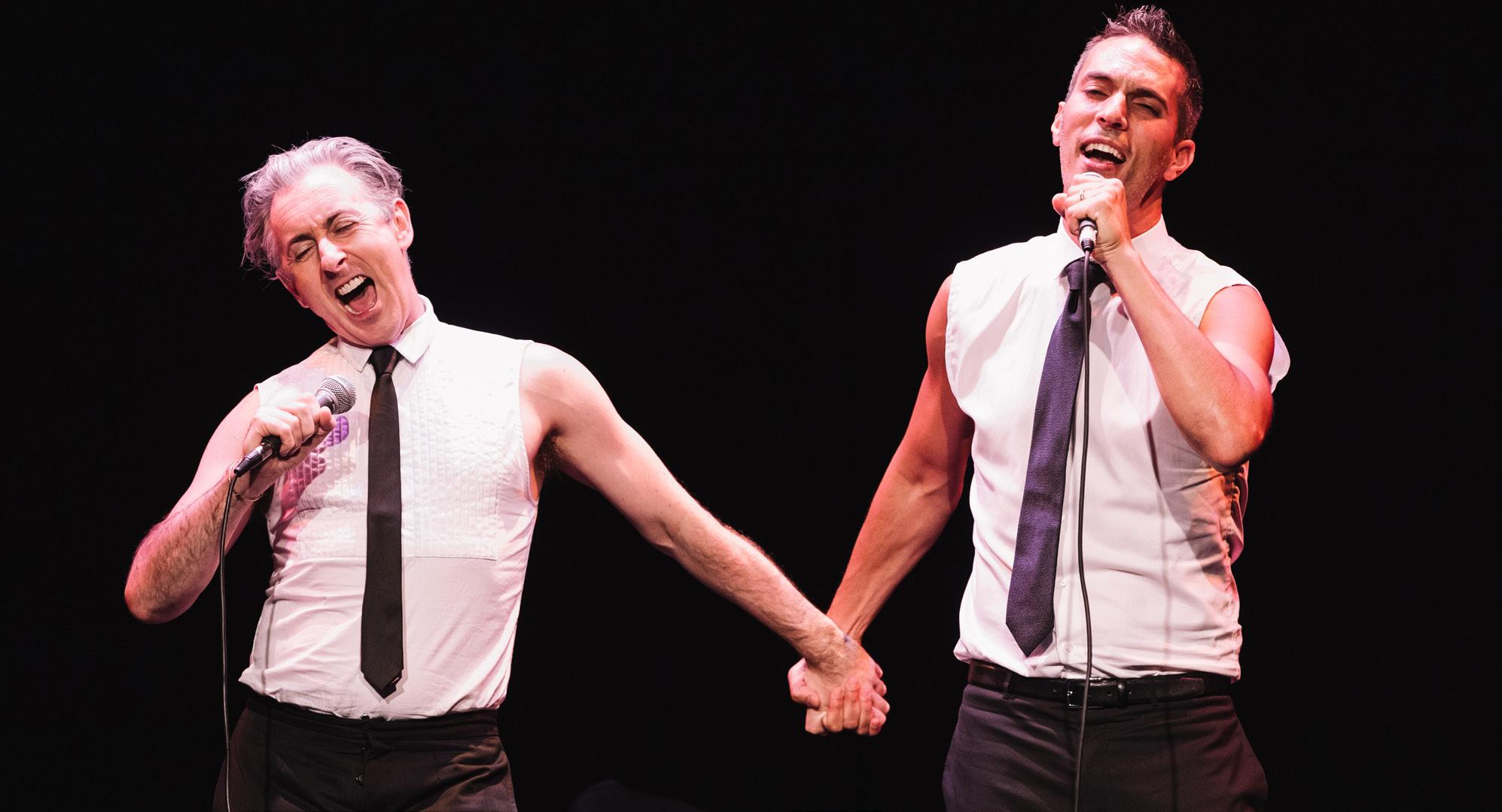
Is there a role you haven’t played on the stage that’s on your list?
No. I don’t yearn. I think it’s a very unhealthy thing to do. Stay in the present and be open to opportunity.
You’ve had some pretty iconic roles on the stage, TV and film. Which medium do you prefer?
Well, in the unlikely event that I had a gun to my head and someone asked me this question, I would choose the theatre. I love theatre for the connection with other humans.
What do you think is your most memorable or iconic role to date?
Alan Cumming.
You’ve previously written a lot about your childhood and how you’ve processed it over the years. Do you think your memoirs have served as an inspiration for queer people?
In my first memoir, Not My Father’s Son , I talked in depth about my childhood and my abusive father, and, yes, I do feel it was inspiring for people. I am contacted on a regular basis after all these years by people who read it and feel the strength to confront members of their family or people in their lives who have been abusive to them, or just that they feel less alone because someone like me in the public eye has spoken up about my past.
Do you consider yourself a role model for the LGBTQ+ community?
I do. Not a self-imposed one. It just seems to have happened and I take it very seriously. But I am a role model because I am my own man, I try to do what’s right, and I speak out when I see injustice and I feel my voice could make a difference.
Who do you consider a role model?
There are lots of people you won’t have heard of, but my role models are people who have overcome struggles and continue to.
Do you think you’ll ever do another season of your podcast
Alan Cumming’s Shelves?
No. It was sweet while it lasted, but I think there are too many podcasts in the world and I don’t want to clutter up the planet with another one of my own.
What do you want people to know about you that they might not already know?
I have no wisdom teeth and I am really good at making food for large groups of people.
What’s next for you?
Season 2 of Schmigadoon, the series I did for Apple TV+, comes out in April. This time it’s called Schmicago! I also have a new movie with Katie Holmes called Rare Objects out in April too. And I will be filming a movie in Canada with first-time director Mike Clowater called Drive Back Home.
Finally…it’s been 26 (!) years since the release of Spice World.
Who is your favourite Spice Girl?
Always was, always will be: Ginger Spice. Geri and I have actually stayed friends and I have loved seeing her blossom into the great woman she is.
27
COVER CHRISTOPHER TURNER acted as guest editor for this issue of IN Magazine. He is a Toronto-based writer, editor and lifelong fashionisto with a passion for pop culture and sneakers. Follow him on social media at @Turnstylin.
Alan Cumming and Ari Shapiro in Och & Oy! A Considered Cabaret
THE FRUSTRATING IMPOSSIBILITY OF PROPER QUEER REPRESENTATION
Representation isn’t reparations, no matter how badly television networks and movie studios try to convince you it is
By Jesse Boland
As someone living in California, where seasonal weather is not a thing, I often measure the passage of time by the quarterly announcements of which television shows have been cancelled in that period. These are often delivered to me via queer media publications that I follow, which lament the loss of yet another show highlighting LGBTQ+ representation, even though they never posted about it prior to its cancellation. While this influx of queer projects failing may seem like an indication of the general public’s homophobic disdain towards the presence of queerness in film and television – which is not entirely untrue – there does need to be some accountability taken by the studios and creators who are failing to give their audiences what they want.
Simply put, the vast majority of queer content creators market their entire project on offering one thing alone: representation. While once considered an integral part of humanizing queer people in the eyes of the world, Hollywood attempts at queer visibility have become as patronizingly mundane as holding your cat in front of the mirror and telling them, “That’s you!”
When we talk about the epidemic of queer film and television failures, one question I often ponder (with never a solid answer) is, What actually makes a project a queer project? The GLAAD awards determine which nominees will be up for consideration based on the qualitative criteria that the nominees must perpetuate

28 IN MAGAZINE MARCH / APRIL 2023
POP CULTURE
Photo by Glenn Carstens-Peters on Unsplash
“Fair, Accurate and Inclusive Representations” of the LGBT community, “Boldness and Originality” of the project, significant “Cultural Impact” on mainstream culture and “Overall Quality.” Yet that leaves plenty of room for ambiguity as to what makes a project queer in itself. Is it determined by whether the characters are queer or whether the actors playing them are queer? Is any film directed by Greg Berlanti inherently considered queer simply because he himself is gay? Should Brokeback Mountain not fall under the canon of queer cinema because everyone involved in its making was straight? Is it a quantitative matter, where queerness is determined by the number of queer characters (such as the Gossip Girl reboot), or is it more qualitative, where the overall tone of the show feels more gay focused even though only one character is gay (like on The Other Two)? Determining how you assess the subjective queerness of a project, it can be argued that queer content is either on the decline or an incline of commercial and critical success, based on what fits the criteria.
With that logic, how do we determine if we are actually being represented or not?
Aside from its murky ambivalence, the issue with queer representation is that it sets itself up for failure by overselling an impossible promise. Simply put, the notion of representing queerness suggests presenting people of every imaginable gender variation and sexual orientation within the spectrum before even considering their intersections of race, age, body type and class – a simply impossible task for any project. It can feel at times extremely patronizing when a show is marketed as LGBTQ+ despite being visibly centred on gay men alone, dismissing the other letters of the alphabet. While anyone of sound reasoning would recognize that you can’t represent everyone in one film or show, we do also live in an age where you could innocently tweet, “Taking my dog for a walk! ��” and an alumni of the Jameela Jamil School of Self-Righteous Virtue Signal Posting would reply, “Some of us are actually immunocompromised and can’t go near dogs let alone go for walks during the day because the sensory overload would trigger our ADHD. But #blm right?” with zero irony. Now imagine how deranged these people would get when a movie studio promises to bring queer stories to the forefront of cinema and the story in question ends up being two characters played by Matt Rogers and Jonathan Bailey discussing fleeting while attending a drag brunch in WeHo.
It’s a preposterous notion that literally every aspect of shared thought has to be reflective of the lived experience of you – the main character of reality, after all – but when the entire marketing of a film’s press is the promise of visibility and inclusion, the once trite damnation of “well, I personally don’t feel seen” actually does serve as a valid critique.
Even when a film or show does tackle the tricky issue of diversity with overall success without feeling like it’s meeting a tokenized quota, is that in itself a good enough reason for people to watch it? While Peacock’s Queer as Folk reboot did a surprisingly good job portraying a magnitude of characters of differing sexualities, genders, races and body types – and, more impressively, did so in an organic way – its focus on this as opposed to its clever writing and daring visual direction failed to capture viewer interest, and it was cancelled after one season. Similarly, while receiving positive
reviews from both critics and viewers, Bros was a notorious box office bomb, pulling in only US$14.8 million worldwide against a budget of $22 million, despite months of substantial promotional press and marketing. It was, ironically, in large part the bombardment of promotional press by the film’s writer and star, Billy Eichner, that dissuaded largely queer audiences from watching it. Despite the film’s impressive mission of casting an entirely queer cast for even its straight roles, the sensationalized insistence of its historic impact felt aggrandizing given that the film itself was essentially just Trainwreck on PrEP.
Conversely, just three months prior to Bros’ release came the delightfully enjoyable gay romcom Fire Island, which was noticeably better embraced by gay audiences than the former. Despite being similar in tone, story and authentic queer diversity as Bros, Fire Island succeeded in connecting with its audience due to its emphasis on its cast’s organic chemistry, the simple yet enjoyable storyline, humble promotion, and overall charming likeability of its star and writer, Joel Kim Booster – the last element that Bros was desperately lacking. When you market your film as being a silly, fun, relaxing watch instead of implying it’s a vote on whether or not gay people should have human rights, it leads to a much more enjoyable viewing experience. Who would have thought?
What often leaves the studio executives responsible for these LGBTQ+-focused creations scratching their heads is seeing that the main people bashing these failed projects are queer people themselves. Simply put, people don’t like being told what to do, so when they are pressured to watch a movie out of moral obligation, pushback is to be expected. Listen, no one spends more time consuming media than gay people, and as a result we tend to pick up media manipulation patterns pretty quickly.
Younger people have quickly noticed a very niched style of screenwriting wherein socially conscious dialogue is specifically designed to be screenshot and passed around by the show’s official Twitter account for woke points – and, frankly, it’s exhausting to watch for pleasure. The concept of “representation” is for the most part largely a marketing scheme designed to take people’s money under the guise of social activism, when in reality we all know that behind ever marginalized face on screen is a baker’s dozen of cishet, white male producers, casting directors and network executives who are funding their greed off of exploitative identity politics. Representation is a great first step towards social innovation, but without further action, we are stuck in a marathon of first steps with no desire to expand our contributions.
Ultimately, there will never truly be proper representation of queerness in film and television, because queerness itself can never fully be compartmentalized. I mean, for fuck’s sake, we’re the community that has to update our own flag every five years because we keep discovering new ways to express ourselves. But that’s somewhat the fun of queerness, never truly being understood by the outside world, which may often use their newfound understanding of our cultures with bad intentions. Netflix originals shouldn’t be how straight people learn to humanize us, and it certainly shouldn’t be how we learn to humanize ourselves. Representation isn’t reparations, no matter how badly television networks and movie studios try to convince you it is…between sponsored advertisements.
29 POP CULTURE
JESSE BOLAND is that gay kid in class who your English teacher always believed in. He’s a graduate of English at Ryerson University (now Toronto Metropolitan University) who has a passion for giving a voice to people who don’t have data on their phones and who chases his dreams by foot because he never got his driver’s licence.
The Queer Icons Of The Rian Johnson Universe
We celebrate the director’s contribution to the arts by highlighting the various queer icons he has placed centre stage in his blockbuster projects
By Matthew Creith
It’s difficult to pinpoint precisely what makes a queer icon. Sometimes it can be a mix of camp and ostentatious behaviour. Sometimes it comes in the form of authenticity and ego. Often a queer icon doesn’t have to acknowledge their place in the LGBTQ2A+ community. They are who they are, and they don’t apologize for it.
Certain helmers have made a point of casting queer icons in many of their films and television projects. John Waters, for example, is responsible for bringing Divine to the public’s attention. Christopher Guest has a history of employing Jennifer Coolidge and Parker Posey in many of his projects. Most notably, this sort of casting has come from producer Ryan Murphy, who recently thanked many of these icons in his lengthy speech at the Golden
Globe Awards while accepting the Carol Burnett Award, which was created to honour excellence in television.
But other filmmakers are also making their mark in cinema and television with staples of the queer icon kind. One of those is writer and director Rian Johnson, a man unafraid to put these excellent actors front and centre in many of his whodunit projects.
For those who don’t know Rian Johnson, he is responsible for mystery films like Looper, Knives Out and 2022’s Glass Onion In honour of his recently released television series Poker Face (available to stream on Citytv+), it’s time to celebrate Johnson’s contribution to the arts by highlighting the various queer icons he has placed centre stage in his blockbuster projects.
a widowed lesbian. Curtis is married to director Christopher Guest, and the two share a trans child named Ruby.
Glass Onion: A Knives Out Mystery showcased talent across the board and has become an Academy Award-nominated film this year. In this stand-alone sequel to Knives Out, Benoit Blanc is tasked with solving yet another murder, this time involving a tech billionaire who is on a private island with all of his closest frenemies.
The Knives Out Franchise
With the Knives Out franchise beginning in 2019, Rian Johnson created an Americanized version of an Agatha Christie murder mystery. Knives Out is centred around a dysfunctional family whose wealthy patriarch is murdered, and detective Benoit Blanc (Daniel Craig) arrives to solve the murder.
Actor Jamie Lee Curtis plays Linda Drysdale, the eldest daughter of the bunch, who might have some secrets she wants to keep hidden. Curtis is the famed daughter of Janet Leigh and Tony Curtis, two Hollywood icons in their own right. But Jamie Lee Curtis has toed the line between A-list star and queer icon for years, stemming from her days as a bona fide Scream Queen as part of the Halloween franchise. She has also been a decades-long activist for the LGBTQ2A+ community as an ally, even curtailing her character Principal Karen Lowry in 2015’s Spare Parts as
Singer and actor Janelle Monáe plays a dual role in Glass Onion, a true tour-de-force undertaking among the likes of Kathryn Hahn, Kate Hudson, Dave Bautista and Edward Norton. Monáe has publicly expressed her willingness to be open about being non-binary in real life. According to an interview with the Los Angeles Times, Monáe announced that her “pronouns are free-ass motherfucker – and they/them, her/she.” She has also acknowledged having polyamorous relationships in the past, and previously identified as bisexual and pansexual
Monáe continues to support the LGBTQ2A+ community. She recently appeared as a guest judge on the 15th season of RuPaul’s Drag Race and its spin-off series RuPaul’s Drag Race: Untucked.
Glass Onion is notable for a slew of cameos throughout the film. Still, some of the best laughs come from the pandemic-era scene where Benoit Blanc plays Among Us over Zoom with Natasha Lyonne, Stephen Sondheim and Angela Lansbury. Glass Onion carries some extra weight as the last film to feature Sondheim and

30 IN MAGAZINE MARCH / APRIL 2023
ENTERTAINMENT
Daniel Craig as Detective Blanc in Knives Out
Lansbury – both queer icons – before both legends passed.
Stephen Sondheim is famous for his contributions as a composer and lyricist to the Broadway stage, with well-known entries like West Side Story, Gypsy, Follies, A Little Night Music, Sweeney Todd: The Demon Barber of Fleet Street and Into the Woods. An introvert through much of his life, Sondheim was open about his sexuality and proud of being a gay man, which he acknowledged in public when he was nearly 40 years old.
Angela Lansbury was never shy about her place as a queer icon: she was a staunch supporter of gay rights, and became an ally in the fight against AIDS at the height of her career on Broadway, film and television. She raised money for AIDS-related charities and co-starred in Broadway productions like Gypsy and Sweeney Todd that catered to a gay audience. In the 1940s, she married a gay man named Richard Cromwell (the marriage lasted less than a year).
But the Knives Out franchise would be nothing if it weren’t for Benoit Blanc himself, Daniel Craig. The English actor who played James Bond on the big screen for five films might not be the obvious choice for this role, but Rian Johnson has made the dashing actor a queer icon as of late.
In Glass Onion, it is revealed that Benoit Blanc is gay and living with a man named Phillip (Hugh Grant). Johnson directs this reveal in a natural and unassuming way, leading the audience towards a main character who is comfortable in his own skin. When Blanc arrives at the elaborate Greek vacation sequence, he adopts a relaxed look with an ascot and striped bathing suit. It’s an homage to his character’s quirkiness but also a nod to Blanc’s queerness that cannot be denied.
Poker Face
Poker Face is Rian Johnson’s newest television series, which he developed for star Natasha Lyonne. A familiar face and real-life friend of Johnson’s, Lyonne plays casino employee Charlie Cale, who is on the run throughout the United States as a witness to a crime. In her travels, Charlie encounters numerous sketchy individuals, and she uses her abilities to sniff out liars in order to catch murderous strangers along the way.
Natasha Lyonne has been working in the entertainment industry since she was a child actor, even appearing as herself in a brief cameo in Glass Onion. However, she came to the attention of the LGBTQ2A+ community everywhere with her stellar performance opposite Clea DuVall in 1999’s But I’m a Cheerleader. Portraying a lesbian teenage character sent to a conversion therapy camp, Lyonne amassed a significant cult following in an independently made LGBTQ film. She followed up that performance with appearances
in Orange is the New Black and DuVall’s directorial effort The Intervention, which helped solidify Lyonne’s standing as an actor who has played a multitude of gay characters.

Poker Face has been devised to depict a new case for Charlie Cale to solve each episode. Every episode features a brand new storyline and a new set of characters, played by some well-known actors. Among this ensemble cast is a treasure trove of queer icons, including Judith Light, Clea DuVall, Stephanie Hsu, Cherry Jones and Jameela Jamil.
Judith Light might best be known for her starring role as Angela Bower in Who’s the Boss?, but the working actor has portrayed many characters on screen that span hits like Transparent and Ugly Betty. She counts herself as one of the first major celebrities to advocate for LGBTQ2A+ people and others who have contracted AIDS. Light currently serves on the board of the Matthew Shepard Foundation and the Point Foundation, which supports students who are discriminated against because of their sexual orientation or gender identity.
Clea DuVall, Stephanie Hsu, Cherry Jones and Jameela Jamil are all queer actors working successfully to embody talent and diversity within a growing entertainment environment. Jamil was a judge on the voguing reality competition show Legendary, while DuVall has steadily worked as a director, actor and writer for years, bringing LGBTQ2A+ stories directly to global audiences. Jones is a two-time Tony Award winner and three-time Emmy Award winner for her work on 24, The Handmaid’s Tale and Succession. Hsu has seen her star on the rise in the past 12 months with her multi-layered performance in Everything Everywhere All at Once, for which she recently received a nomination for the Academy Award for Best Supporting Actress.
As Poker Face releases new episodes weekly and the Knives Out series of films expands to another installment, Rian Johnson will surely introduce audiences to more queer icons in the near future.
31
is a freelance journalist based in Austin,
He is a member
GALECA: The Society of LGBTQ Entertainment Critics, and participates in the association’s Dorian Awards. You may also know him for his work on Matinee With Matt, Screen Rant and Giant Freakin Robot. You can find him on Twitter: @matthew_creith or Instagram: matineewithmatt. ENTERTAINMENT
MATTHEW CREITH
Texas.
of
Natasha Lyonne as Charlie in Poker Face
Take a peek into some of the trends that’ll make the upcoming spring season a blast
PHOTOGRAPHER: Ivan Otis
CREATIVE DIRECTION, WARDROBE STYLING: Paul Langill
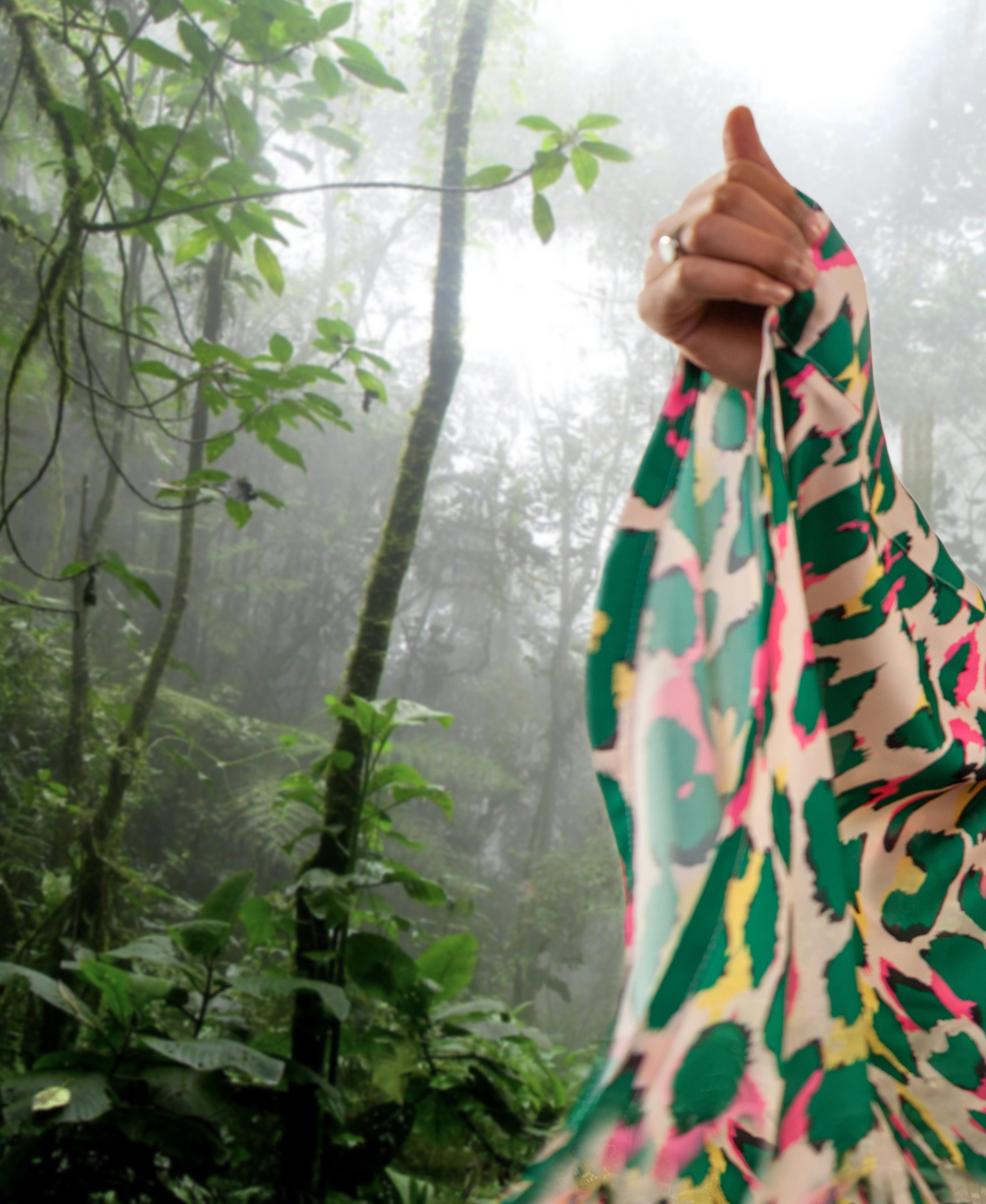
Tropic Thunder
MEN’S GROOMING: Paul Pereira for Solobace Salon
MODELS:
32 IN MAGAZINE MARCH / APRIL 2023
FASHION
Jiere (from B&M Models); Keshawn, Shane (both from Elite Models); Zachary (from Dulcedo Models)
FLUORESCENT LEOPARD PRINT KIMONO-STYLE HOUSECOAT: Afi Briant
BLACK LEATHER PANTS: North Bound Leather
NECKLACES: Aarron Blencowe for Big Lola’s

33 Thunder FASHION

34 IN MAGAZINE MARCH / APRIL 2023 Thunder FASHION
ONE-OF-KIND HAT: Coup De Tete
DARK GOLD ZIPPERED SPRING JACKET: Christopher Bates
PRINTED, HOODED HOUSECOAT: Afi Briant WHITE AND GOLD SWIMSUIT: Rhowan James GOLD CHAIN: The House Of Kamazani

35 Thunder FASHION
TURQUOISE LEATHER JACKET: Northbound Leather

SLEEVELESS T-SHIRTS: Northbound Leather
GOLD NECKLACE: The House Of Kamazani
WHITE BOOT CUT JEANS: Guess
36 IN MAGAZINE MARCH / APRIL 2023 Tropic FASHION
Tropic

37
FASHION
GREEN PRINTED LATEX SLEEVELESS TOP: Northbound Leather LIGHT FEATHERWEIGHT TRANSPARENT JACKET: Christopher Bates BLACK PLEATHER PANTS: Zara
RAINBOW PRINTED HOUSECOAT: Afi Briant
BOOT CUT BLUE DENIM-LOOKING LEATHER PANTS: Northbound Leather
NECKLACES: Aarron Blencowe for Big Lola’s

38 IN MAGAZINE MARCH / APRIL 2023 FASHION

39 FASHION
RED AND BLACK PRINTED RIBBON TIE SHIRT: The Ross X Ross collection, available at The Mayer Official RED STRIPED BLACK DRESS PANTS: The Mayer Official
BLUE PRINTED AND FITTED TRENCH COAT: Christopher Bates
WHITE T-SHIRT: The Bay
GOLD SUNGLASSES: Givenchy
BOOT CUT BLUE DENIM-LOOKING LEATHER PANTS: Northbound Leather
ACCESSORIES: The House Of Kamazani
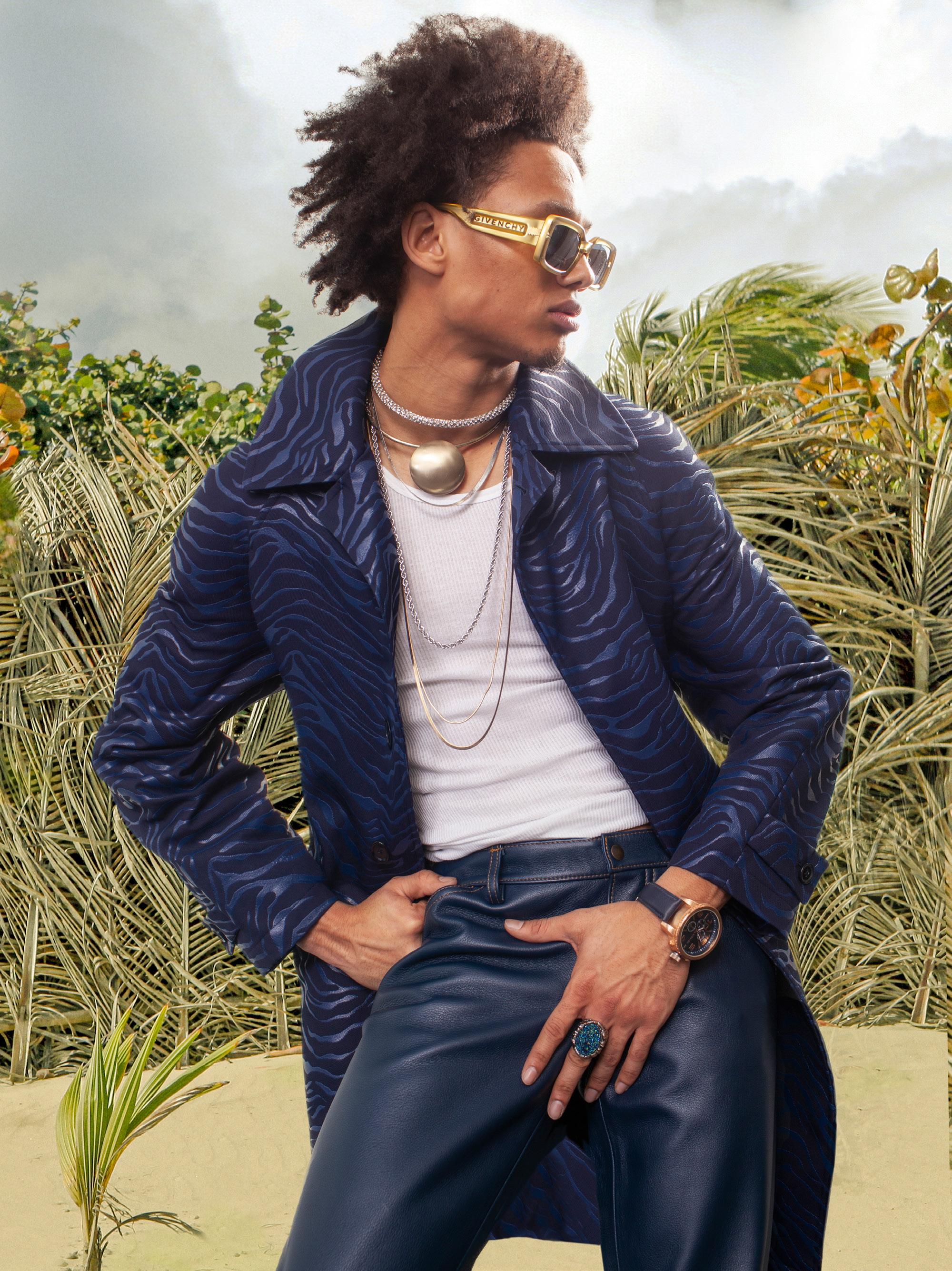
40 IN MAGAZINE MARCH / APRIL 2023 FASHION
MEN’S KHAKI LEATHER JACKET: Northbound Leather REX BOW NECK SHIRT: The Ross X Ross collection, available at The Mayer Official BLACK LEATHER PANTS: Northbound Leather BROWN BOOTS: H&M

41 FASHION
THE HISTORY OF THE (Super-Gay)
(Super-Gay)
InternationalMale CATALOGUE
A look back at the unusually fashionable history of the groundbreaking mail-order catalogue
By Christopher Turner
For countless gay men who grew up during a slightly earlier era, the glossy International Male mail-order catalogue was like nothing that had come before it, providing a portal to both fashion…and fantasy. Between the time it launched in the mid-1970s and its closure in 2007, this one publication helped to shape the image of masculinity and menswear, especially for gay men.
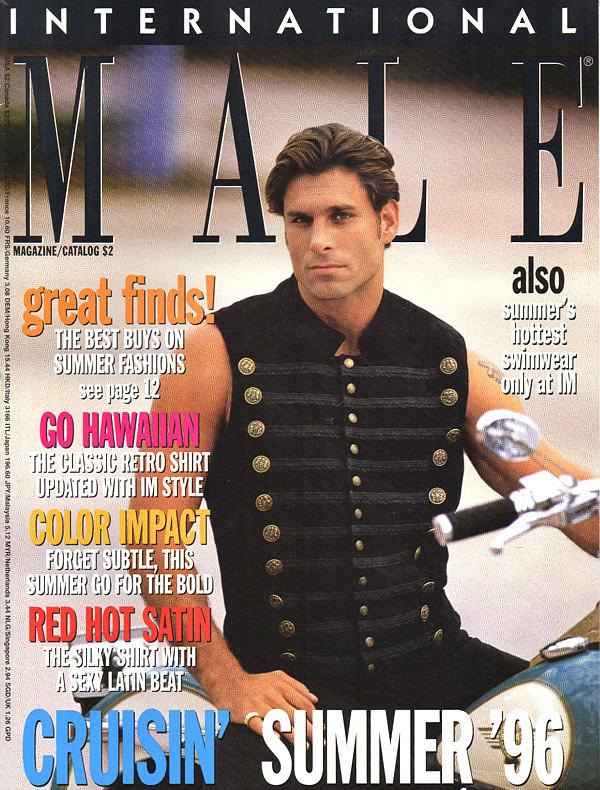

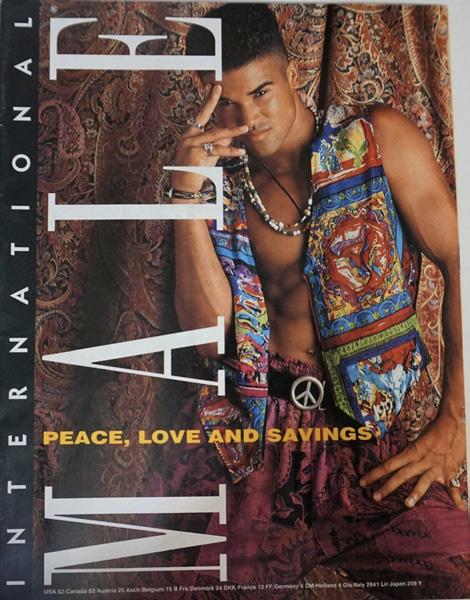

The pioneering publication had an early tagline of “Freedom for the man,” and styled itself as a catalogue-slash-magazine that was filled with ripped, muscled bodies wearing seemingly out-of-reach fashions, sexy swimwear and skimpy underwear. International Male treated men as objects of desire, with its subtly suggestive all-male photography layouts. But given the profound stigma in that era about homosexuality (it was only removed from the American Psychiatric Association’s list of psychiatric disorders in 1973!), it was never advertised as a gay publication, even though it was recognized as exactly that as it gained popularity.
Still, the catalogue became a North American phenomenon and was a massive success, raking in over US$100 million at its height
in the 1990s, and hitting three million homes with its quarterly mailers before it finally shut down.
It’s safe to say that a large number of International Male’s young readers never bought anything from the catalogue, but nonetheless it played an important role in the sexual awakening of many of those readers with its somewhat coded homoeroticism. The catalogue also had a broader cultural impact: it was ahead of its time in the world of men’s fashion, inspiring fashion trends ahead of the mainstream, and it inadvertently kicked open the doors for the future of sensual “sex sells” advertising campaigns filled with chiselled pecs and abs.
Today, many will reflect back on the mail-order clothing catalogue as “Victoria’s Secret for men.” And, yes, like that famous lingerie brand, International Male sold a lifestyle in addition to offering plenty of fodder for sexual fantasies – but it was much more than that. Here’s a look back at the rise and fall of one of the originators of the mail-order boom: the super-gay-but-not-gay International Male mail-order catalogue.
42 IN MAGAZINE MARCH / APRIL 2023
STYLE
In the beginning
The origins of International Male go back to 1968, when formerly closeted US Air Force veteran Gene Burkard returned from Europe with a desire to bring a little of the continent’s fashion home with him. While he was in London, Burkard had seen a suspensory (a bandage-like medical garment intended for men with hernia problems) in a shop window and thought it could be redesigned as men’s underwear. So he purchased one from the medical store, weaving his way through the incontinence items and back braces, and brought it back to San Diego. There he hired a pattern maker to modify it and turn it into the “Jock Sock.” It was sort of a quasi-jockstrap, minus the strap…just a colourful cup to hold everything together in the front.
Burkard was pretty familiar with the marketing opportunities magazines offered – prior to the army, he had worked as an advertising copywriter at the Milwaukee Journal – so after he created the “Jock Sock” in 1971, he began marketing the men’s underwear in a range of colours in the back pages of The Advocate and the Los Angeles Free Press. He then developed a national advertising campaign and managed to overcome resistance to seemingly gay advertisements by appearing in such publications as the Los Angeles Times, Playboy and Penthouse magazines.
The orders started rolling in.
In 1974–75, Burkard incorporated his operations under the name Brawn of California and moved production into a factory with 40 sewing machines producing 22 different items. In 1977, he officially opened an underwear and loungewear brick-and-mortar store, also called Brawn of California, which was located in San Diego at 2802 Midway Drive. He sold swimwear and was determined to change the way that most men perceived loungewear: rather than oversized silk pyjama sets and tacky leopard-print briefs that were mocked in the mainstream, he envisioned something truly sexy, like subtly revealing underwear, thongs and jocks. It took off, and the following year he opened a second store in West Hollywood located at 9000 Santa Monica Blvd.
But the company’s success really jelled when Burkard began mailing catalogues that invited men to order (and wear) whatever they wanted.
Early on, Burkard had recruited a secretary to help him bring the company to the next level. This woman, Gloria Tomita, would go
on to help him shape the International Male catalogue. Tomita had an eye for what fit perfectly on the male body, while Burkard dealt with the fashion angle. Together they put together a ragtag staff that consisted largely of gay men and straight women who acted as fashion designers, art directors and salespeople. The environment was, at best, essentially an “all hands on deck” situation where the salespeople were helping design clothes, art directors were helping sell, etc. But it worked.
Burkard realized early on that he could reach a gay male audience by putting flamboyant clothes on ultra-masculine male models. In his mind, the clothes would be a more fashionable alternative to the traditional grey suit that every man seemed to be wearing, and the models would be fun to look at, too.
In 1976, the very first International Male catalogue hit the mail, filled with magazine-style spreads showing what Burkard thought of as fashion-forward threads. He wanted to promote the image of virility and a lifestyle of good-looking men who were leading exciting lives in exotic international settings. From its initial issue the catalogue featured flamboyant clothes, including wild-patterned shirts, frilly shirts, body-hugging knitwear, military-inspired gear, mesh tank tops, rugged khakis and, of course, skimpy bikini underwear, all modelled by handsome, mostly heterosexual, white models with chiselled jaws and muscled bodies. The paragons of masculinity.




The clothes were meant to appeal to both gay and straight men; however, the images were borderline homoerotic from the start, and the catalogue was among the first non-pornographic publications to focus on men’s bodies – often in a blatant, sexually charged way.
“We never said we were a gay catalogue, but gays ‘got it,’” Burkard said in All Man: International Male Story, the feature documentary debut of Bryan Darling and Jesse Finley Reed that had its world premiere at the Tribeca Festival in 2022. (The filmmakers interviewed Burkard before his passing on December 11, 2020.)
“I mean, gays looked at it and said, ‘My God, that’s me, and I can get this in the mail because it’s not saying gay anywhere.’”
“International Male really capitalized on putting masculine guys in pretty not masculine outfits,” notes fashion expert Carson Kressley, who also appears in the All Man documentary. “The very start of the metrosexual movement – where you can wear clothes just to have fun.”
43 STYLE
How did I get this?
For gay men who came of age in the late 1970s through the early 1990s, hiding the International Male catalogue, which somehow seemed to magically appear in the family mailbox, became something of a rite of passage.
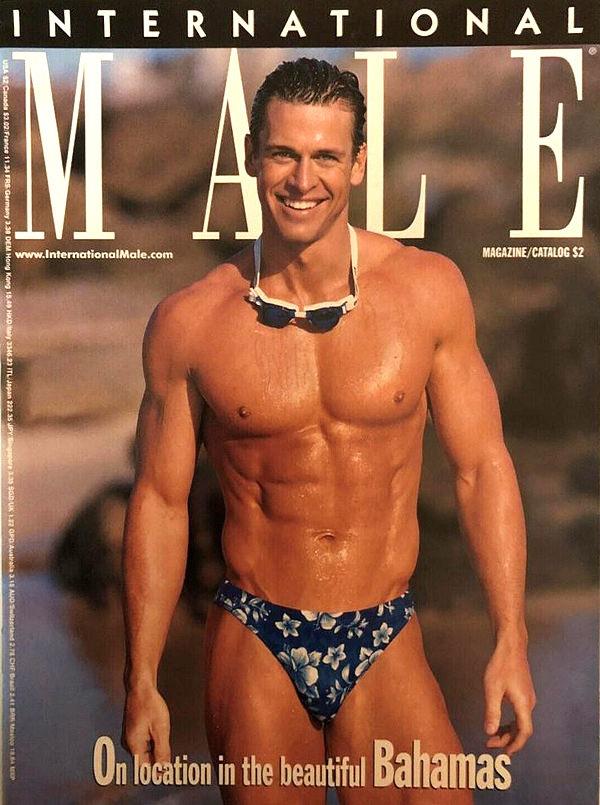


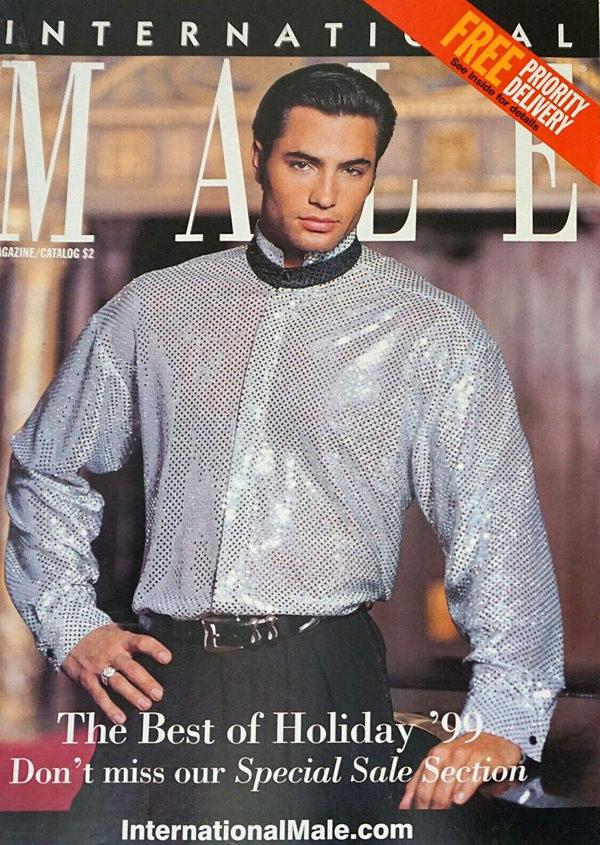

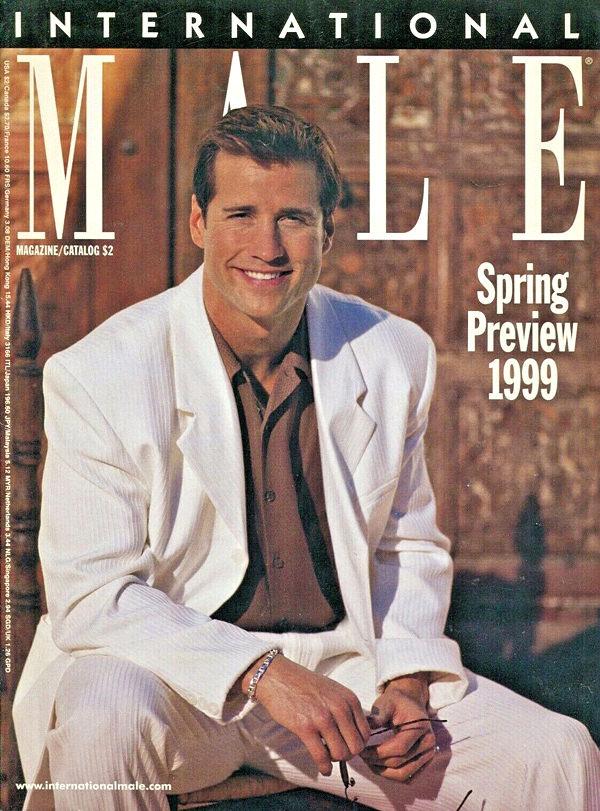

When people recall receiving their International Male catalogues in the mail, “How did they get my name?” is arguably the number one question that follows. The answer is actually pretty simple: the company bought mailing lists. Thanks to customer lists purchased from magazines like GQ and Playboy, and even mail-order music club Columbia House Records, International Male built their own mailing list, after narrowing down the purchased lists to the demographic they were going after: young men, especially if they were in their 20s and 30s.
In the beginning product orders had to be phoned in, as no online database existed at the time, so whenever a new issue was imminent, the phones would be ringing off the hook. As time went on, it eventually became necessary to computerize the entire ordering system.
Of course, gay men were by no means the catalogue’s sole – or even primary – target audience. Ultimately, a lot of the unknowing subscribers were straight, and according to Burkard as well as previous International Male employees who have been interviewed throughout the years, a lot of the catalogue’s customers were actually women buying clothing from the catalogue for their men. Some former employees have gone as far as to say that 75 per cent of buyers were women shopping for their significant others,
trying to get their boyfriends and husbands to swap their boring beige Dockers khakis, polos and white Hanes briefs for something more adventurous.
Shaping the image of masculinity and menswear
Even if a large percentage of the actual customers were straight (or closeted), it’s hard to deny the impact the catalogue had on young gay men across North America, or the confusing layers of masculinity that the magazine presented: straight guys wanted to be the models, and gay guys wanted to have sex with them. This is how International Male managed to find a wide audience, which also led to the magazine getting a reputation of a gay magazine. After all, as influencer William Graper notes, the “Adonis” bodies on display weren’t the revolutionary part. “What was interesting about that was the flamboyance of the clothes that were then put on that guy.”
By combining fashion and masculinity, International Male unintentionally (or even intentionally) spoke to many and helped put its idea of the perfect male physique into the general consciousness. Its admirers included everyone from Calvin Klein to movie and theatre costume designers looking for threads as well as inspiration and ideas.
The catalogue also helped launch careers. Over the years, many now-famous models and actors posed in their early careers for the catalogue. Pre-stardom models included the likes of Shemar Moore, Kevin Sorbo, David Chokachi, Cameron Mathison, Charles Dera, Christian Boeving, Gregg Avedon, Rusty Joiner, Brandon Marcel, Scott King, Brian Buzzini and Reichen Lehmkuhl.
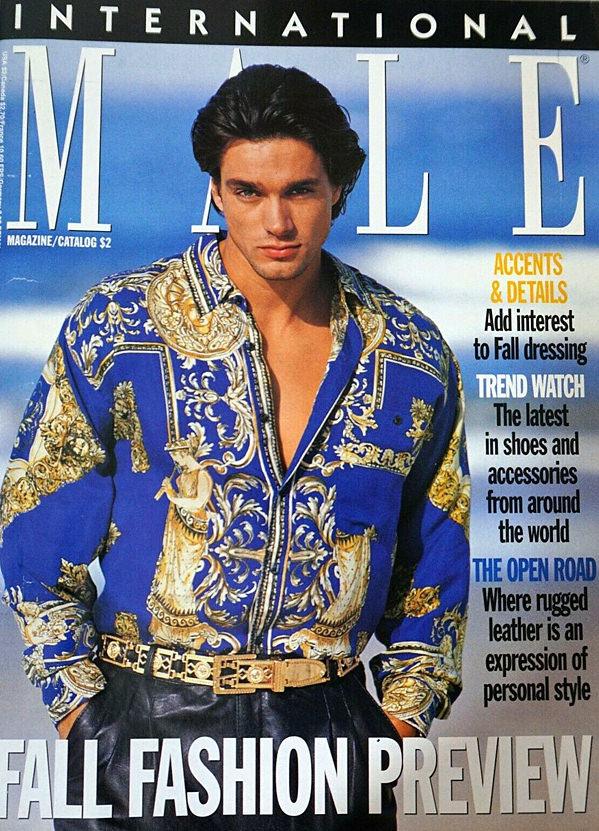
44 IN MAGAZINE MARCH / APRIL 2023 STYLE
Promoting the Adonis body type wasn’t new in itself, but the idea of putting flamboyant clothes on a hunky male model was, and the appeal of International Male was largely lowbrow, appealing to working-class men who dreamed of dressing like a dandy living a fashionable and fun life of leisure. And that’s what sold the apparel…and provided imagery that many gay men would ultimately fantasize over.
Something not considered at the time? The damaging effects of insinuating into popular culture the idea that this was how all male bodies should look, or the fact that the catalogue used very few models of colour.
The magazine gained popularity in the mid ’80s and early ’90s, coinciding with the onset of the AIDS epidemic, and the escapist fantasies of International Male suddenly seemed out of touch with the grim realities of that time. The predominantly gay male staff of the catalogue was hit by the AIDS crisis that ravaged North America, and a number of them died from disease.

The beginning of the end
Eventually, Burkard was approached to sell his growing business. In 1987 he retired and sold International Male to Hanover House, a giant conglomerate based out of Hanover, Pennsylvania, that was doing big business with Middle American mail-order catalogues. They had big plans for International Male, and began to take it mainstream shortly after the deal was finalized.
Of course, being managed and produced by a more conventional company meant big changes…and by the early ’90s, there were lots of them. Hanover House wanted to make the catalogue sexy but not sexualized, and wanted a broader demographic of subscribers. They recognized the gay customer base and wanted to keep it, but also wanted to expand the catalogue/magazine. They did. It grew to an enormous extent.
The early 1990s saw the expansion of the International Male business under Hanover Direct as Versace-inspired men’s fashions from Europe reshaped the demand for menswear in North America. There were even attempts to hire heterosexual photographers, to pair the hunky male models with women and to tone down the clothes and the homoerotic images. But as International Male found its mainstream image working, it began to lose the interest of its old gay customer base.
As the magazine continued to expand, it received its fair share of backlash and was often dismissed as a gay rag, famously being skewered in a 1993 Seinfeld episode about pirate shirts (the Season 5 episode “The Puffy Shirt” originally aired September 23, 1993). And in the 2003 comedy movie Zoolander, a notable scene featured Derek Zoolander (Ben Stiller) on the cover of International Male, while another memorable mention came during a heart-to-heart between Zoolander and an equally vacuous male model rival, Hansel (Owen Wilson). “Your work...in the winter International Male catalogue... made me want to be a model. I freakin’ worship you, man.”
The final nail in the coffin came when regular retail department stores began selling edgier menswear, and the importance of International Male rapidly declined. It hung on for a few years, but by 2007, the International Male fantasy was over and the last paper catalogue was mailed out.

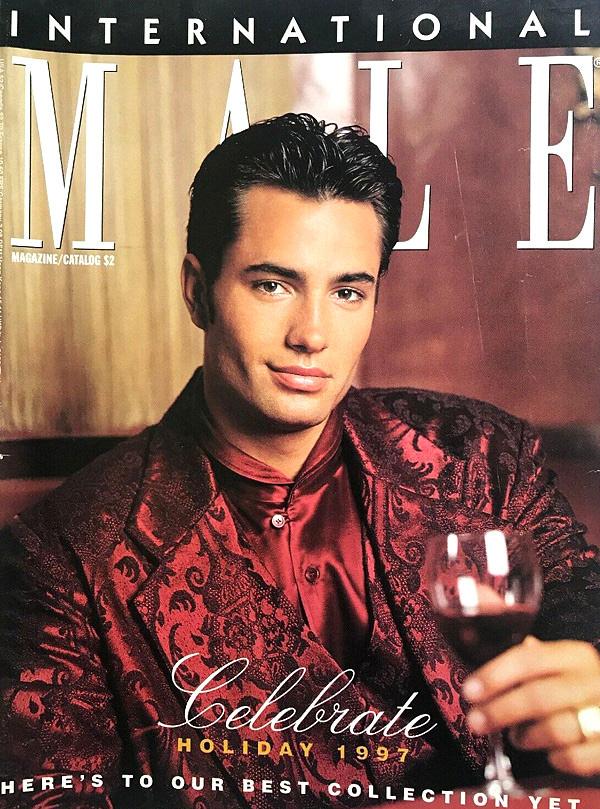


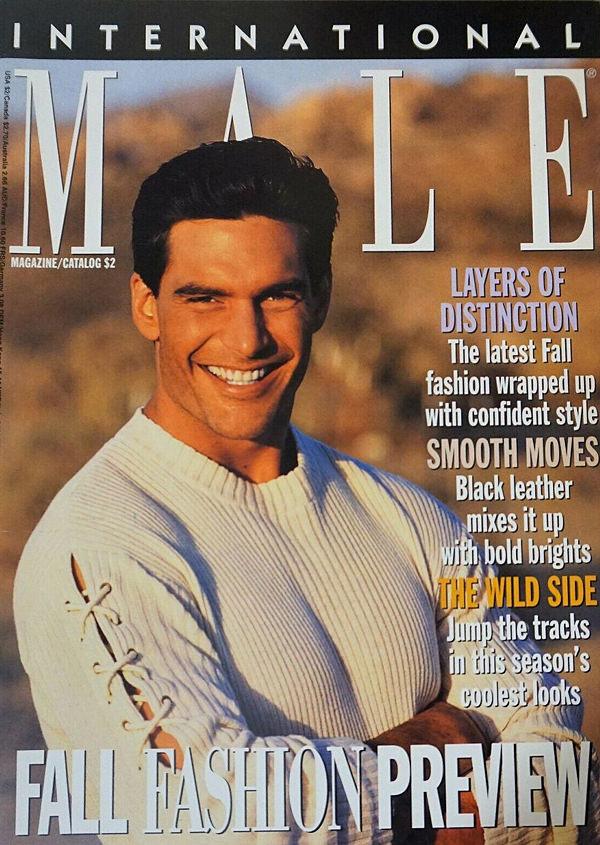
The catalogue may be gone, but what it inspired is very much a part of men’s fashion and how using sex can sell men’s apparel. Love it or hate it, the groundbreaking mail-order catalogue set the gold standard for fashion and desirable bodies for gay men since the mid-70s.
In desperate need of a little glossy nostalgia? If you don’t have any old issues of International Male lying around your basement, you can easily search them out on the internet. A quick scan of eBay shows hundreds of issues up for grabs
As for a return to the glory days of International Male? The fantasy is long gone…but keep watching the mail, just in case.
45 STYLE CHRISTOPHER
IN Magazine
Toronto-based writer,
and lifelong
on social
at @Turnstylin.
TURNER acted as guest editor for this issue of
. He is a
editor
fashionisto with a passion for pop culture and sneakers. Follow him
media
The Pleasure Of Flirty Straight Celebrities
By Paul Gallant
Remember the metrosexual? That type of man who became a media sensation in the aughts for his taste in grooming products and fashion, who didn’t care if people thought he was gay or flaunting himself for gay attention. The metrosexual was personified by UK soccer star David Beckham, husband of the former Posh Spice, who underwear-modelled and spritzed his tattooed body to the delight of gay men around the world. (That affection should come to an abrupt end in light of Beckham’s $248-million ambassadorship for World Cup 2022, hosted by the virulently homophobic Qatari government. David, baby, even a whole bottle of your Beyond cologne is not going to cover up that stink.)
These days we live in the influencer age, which makes “metrosexual” a moot term. Every savvy man with his eye on fame and followers now details his eyebrows and has his regular manicures – it’s barely worth commenting on. In mainstream media culture, nobody cares if somebody is mistaken for gay. In fact, many straight celebrities go out of their way to be not-quite-straight. Daniel Craig says he prefers going to gay bars. Harry Styles told Rolling Stone, “Everyone, including myself, has your own journey with figuring out sexuality and getting more comfortable with it.” And Andrew “I Have an Openness to Impulses” Garfield is as gay-thirsty as they come.
Craig, Styles and Garfield are likely sincere, but are also being very strategic, considering how contemporary Hollywood is starting to look at casting choices. All three need to soften us up about their playing gay. There’s been increased pressure for filmmakers to cast LGBTQ+ characters in LGBTQ+ roles (and Latinx actors in Latinx roles, disabled actors in disabled roles, etc.). There are more and more of these roles, and some of them are coveted. Whereas back in 1993 Tom Hanks playing an HIV-positive gay man in Philadelphia was seen as a brave, perhaps career-damaging, decision, nowadays having something queer on your resumé gives you cachet. When Hanks was cast in that part, there were only a tiny number of out actors – even Nathan Lane, for God’s sake, waited till 1999 to come out. But now there are lots of openly LGBTQ+ actors looking for work, and it makes sense that they would want first dibs on roles that better match their life experiences.
Fair enough. But that’s mostly a labour problem – making sure a worker is an excellent and deserving match for the job. And I certainly want Jane Lynch, Murray Bartlett, Laverne Cox, Neil Patrick Harris, Sarah Paulson, Kristen Stewart, Yasmin Finney and Ben Whishaw to get all the work they can get. And films like Fire Island, which cast all the queer roles with queer actors, have a special magic.
But having straight characters play LGBTQ+ characters, if they do a good job, is not a customer service problem. There’s a delight in
watching actors push themselves, move outside their comfort zones, invent reactions to things they’ve never lived through.
The contemporary record holder for queering it up onscreen must be Ewan McGregor. As an Iggy Pop/Lou Reed type in 1998’s Velvet Goldmine, he got it on with a journalist played by Christian Bale. In 2009’s critically panned prison-comedy-drama I Love You Phillip Morris, he plays a soft-spoken love interest of, yikes, Jim Carrey. McGregor was naked for a good chunk of 1996’s art-house filmpoem The Pillow Book and played iconic 1970s fashion designer Roy Halston in Netflix’s 2021 Halston. In defence of taking the Halston role, McGregor told The Hollywood Reporter: “If it had been a story about Halston’s sexuality more, then maybe it’s right that gay actors should play that role. But in this case – and I don’t want to sound like I’m worming out of this, because it’s something I did think a lot about – I suppose ultimately I felt like it was just one part of who he was.”

That’s a hoot of an answer, considering how much blunt-force queen-ness McGregor brings every moment he’s on screen as Halston. He’s a straight guy mincing it up to eleventy stupid. By some standards, it’s appalling, but sometimes it’s the only fun thing about that movie.
Hugh Grant is another repeat offender, at the beginning of his illustrious career appearing in the 1987 Merchant-Ivory period drama Maurice (what’s the male version of a bodice ripper? A suspenders snapper?) as the aristocratic love interest of the title character. His cameo in last year’s Glass Onion: A Knives Out Mystery had him as the domestic partner of Benoit Blanc, played by the aforementioned Craig. And Grant’s British parliamentarian had an affair with Whishaw’s character in 2018’s A Very English Scandal
Rupert Everett, one of the first major out actors of his generation, complained that the lead role in Tom Ford’s A Single Man, from
46 IN MAGAZINE MARCH / APRIL 2023 INSIGHT
As starved as LGBTQ+ people have been, historically, for authentic LGBTQ+ stories on screen, they don’t necessarily need to see their own stories to be delighted
Ewan McGregor in Ryan Murphy’s Netflix biopic Halston
2009, should have gone to him, not Colin Firth. “Well, thanks, Colin,” Everett told Piers Morgan just last year (the man can carry a grudge for a long time), “that’s the end of my career. Because, you know, that role really should have been mine.” Firth also played
Some of these gay roles, like Ali in Green Book and Firth in Supernova, seem designed for straight audiences, which is part of the complaint people like Everett have against “gay for pay”: it’s straight people using borrowed gay narratives to evoke feelings from straight audiences. It’s true, if you’re going to exploit our twinkle and our trauma, we should be there making coin or at least having a good time while you’re doing it. A performance that’s not flattering to our community, particularly if it’s an actor who’s not swoon-worthy is, fairly or not, when we really lose our temper. Look how vehemently James Corden was criticized for his swishy performance in 2020’s The Prom.
As starved as LGBTQ+ people have been, historically, for authentic LGBTQ+ stories on screen, they don’t necessarily need to see their own stories to be delighted. The coming-out story was the least entertaining thing about Everything Everywhere All at Once; its silliness was, as RuPaul categorizes certain kinds of camp, completely stupid. Gay men are particularly susceptible to eye candy, which is part of the reason why Craig, in his run as James “Look at me in these trunks” Bond, developed a gay fan base that needs care and attention.
the more supportive half of a gay couple with also-straight Stanley “Devil Wears Prada” Tucci in 2020’s weepy Supernova
Firth has never made any claims to be a little-bit-just-kinda-sorta gayish. Instead, he seems both sheepish and unapologetic. “It’s something I take really seriously and I gave it a lot of thought before doing this,” Firth told Attitude magazine in 2020 upon the release of Supernova. Yet… “anybody should be able to play any role that they want to play – that’s the whole point of acting.”
Firth is a buttoned-down performer, and that subdued anti-cliché approach is the way many straight guys play gay these days. That seemed to the memo, anyway, for Trevante Rhodes playing Chiron/ Black in 2016’s Moonlight, Mahershala Ali’s lovely turn in the 2018 Oscar-winning ugh-fest The Green Book and Timothée Chalamet, who was pure dude except for all the crying at the end, in 2017’s Call Me by Your Name.
Chiwetel Ejiofor, by contrast, pressed the “Camp” button hard when he played drag footwear consultant Lola in 2006’s uplifting Kinky Boots. Taron Egerton as Elton John in 2019’s Rocketman came down somewhere in the middle between outrageous and relatable. And while Rami Malek was charismatic as Freddy Mercury in 2018’s Bohemian Rhapsody, the script’s queasiness with Mercury’s homosexuality got in his way.
Straight British actor Theo James, who might be playing George Michael in a forthcoming biopic of the WHAM! frontman, has become an object of many gay obsessions for his penchant for disrobing onscreen. Okay, he was pretty square in the Divergent series, but he was naked most of the time in HBO’s otherwiseterrible Time Traveler’s Wife. The entire second season of The White Lotus seemed to be built around the Aubrey Plaza character catching a glimpse of his character Cameron’s dick. Viewers know Cameron is not sincere when, crashing in bed next to his friend Ethan (Will Sharpe), he says, “I love you. I just wanna be inside you. I wanna do stuff to you. I wanna make you feel good.” But Cameron’s seductive abilities – which are James’s – get us fired up even if we know it will never happen.

If straight actors are pandering to LGBTQ+ audiences, baring their junk and talking dirty to us, bring it on. Gaybaiting? If you’re hot, just keep dangling that line.

47 PAUL GALLANT is a Toronto-based writer and editor who writes about travel, innovation, city building, social issues (particularly LGBT issues) and business for a variety of national and international publications. He’s done time as lead editor at the loop magazine in Vancouver as well as Xtra and fab in Toronto. His debut novel, Still More Stubborn Stars, published by Acorn Press, is out now. INSIGHT
Theo James and Will Sharpe on The White Lotus
Harry Styles wears a dress on the December 2020 cover of Vogue magazine
Tan Lines In Torremolinos
By Doug Wallace

A small beach town with a big gay attitude sets the scene for a Pride Weekend on Spain’s Costa del Sol that you will never forget
I can see the Rock of Gibraltar from here! Well, not really, but I’m really close. Just like I think I can see Buffalo sometimes if I squint hard enough.
We’re up the beach a ways, just south of Málaga, Spain, in the wee city of Torremolinos, the beating heart of the largest gay scene on the Costa del Sol. Arriving just in time to celebrate Pride Weekend is one of the best ideas I’ve ever had – beach parties, drag shows, guest DJs of course, live acts, even a high-heel race. Add the 30,000 people who turn out for the parade on Saturday and you’ve got a big smile on your face for days.
Happily, we’re getting a brief tour around town by one of the region’s top dogs, the illustrious Antonio J. Martí Bohórquez, coordinator with the LGBTQ+ Andalusia Tourist Board. “Our amazing Torremolinos has been the best destination for the LGBTQ+ community in Europe for the past several years,” he boasts, adding that while there are no statistics, likely a third of the visitors to Torremolinos are part of the LGBTQ+ community.
Antonio is somebody everybody knows, a cyclone of energy, a flurry of hand gestures, ushering us around the 30+ bars and clubs clustered in the Plaza de La Nogalera, the Torremolinos gay village. In the span of a few short hours, we hit a number of different dance floors and drag bars, frolic with the bear and fetish crowds, even poke our heads into the nothingness of not one but two very dark bars, just to get a feel for the entire scene, as it were. All in the name of research! Antonio
speaks and the doormen part. My phone quickly fills up with dozens of images of people I don’t know, all smiling, all blurry. We forget to have dinner – yes, it’s one of those kinds of nights.
But first, a little bit of background
The first gay bar in Spain – Tony’s Bar – opened in Torremolinos in 1962, launching the La Nogalera area on its way to alternative status and stardom. The tourist boom of the ’50s and ’60s had much to do with the city’s popularity as a hot spot for the liberal and the avantgarde, despite this time period also being the heyday of conservative dictator Francisco Franco. The beaches and nightclubs saw many famous faces, the rich and famous, celebrities and royalty, artists and writers, millionaires and starlets – interestingly, many of them gay icons: Grace Jones, Rita Hayworth, Greta Garbo, Raquel Welch. John Lennon came in 1963 with Beatles’ manager Brian Epstein, sparking all kinds of rumours. Frank Sinatra was one of dozens of international entertainers who hit the stages here.
“Torremolinos has always been an icon of modernity throughout recent history,” Antonio says. “Firstly in the ’70s, the Swedish women arrived topless on the beach, which was scandalous in Spain at the time. The gay men and women followed suit, the first of the LGBTQ community to appear.”

On Antonio’s tour, we walk down the historic Begona Passage, the cradle of the fight for LGBTQ+ rights and freedoms in Andalusia. This is where the rights movement in Spain all began, specifically on June

49 TRAVEL
PrideParade_credit_TorremolinosTourism
24, 1971 – almost exactly two years after Stonewall – when the “great raid” of the gay bars anchored to this small alleyway sparked social change. Now, the Begona Passage Association maintains projects that champion freedom and diversity, keeping the historical memory of this emblematic place alive.
“Torremolinos has become an extremely tolerant and modern city, where everyone feels comfortable,” Antonio says. “Gay people have greatly contributed to this welcoming environment, creating a space of freedom and coexistence.”
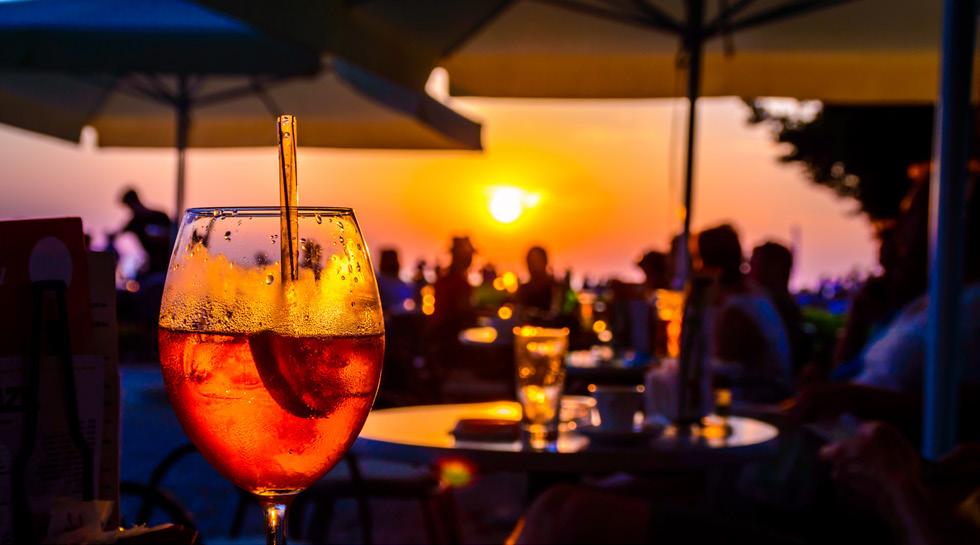

In Madrid, Torremolinos is often referred to as “Chueca on the Beach,” named after Madrid’s own gay district. The train between the two is a mere three hours, perfect for a nap in each direction – and believe me, you’re going to need it.
It’s not all late nights, of course
The nice thing about Torremolinos is that seven kilometres of sand sit right outside your doorstep; all of the hotels are either on the beach or a short walk away. Bajondillo Beach is one of six beaches in town, each linked with a paved promenade along the Malaga coast. The Beirola Beach section is where we find everyone working on their tans, in front of El Gato Lounge and Eden Beach Club, an offshoot of the Eden nightclub. Hotel Ritual, the largest LGBTQ+ hotel in southern Europe, is just a few feet away. We select loungers and make fast friends with the waiter and our seatmates, clandestinely trying to take pictures of the hotties. It’s really kind of an open-air disco, really, a few dancers livening up the mid-afternoon doze. We kind of forget to have lunch (I’m sensing a theme), which may be one of the reasons I lost my favourite sunglasses – a life tax I’m perfectly willing to swallow.
Similarities are easy to draw between Torremolinos and another beach retreat and counter-cultural icon – Sitges, just south of Barcelona. It has always been affordable, unpretentious, not as uppity as Nice or Mykonos, a nice sidestep from Barcelona, even just for an afternoon day trip. Antonio, of course, favours the southern sunshine. “In Torremolinos, there is less seasonality, so you can have fun more or less all year round,” Antonio says. “The other difference is the crowd – which is younger in Torremolinos” than in Sitges, which, he feels, skews a shade older.
But back to Gibraltar. It’s a full-day tour, taking in the Punta of Europa – the southernmost tip, where you can see the mountains in Africa –and the secret underground passages in Cuevas de San Miguel. The popular hiking area of El Caminito del Rey is about an hour north of Torremolinos, its three-hour routes linking gorges, canyons and a large valley – a big nature bath. Farther afield, there are other cool cities to work into your itinerary. Grenada offers astonishing history via the Alhambra palace complex, and Córdoba counters with the even older Mezquita mosque-cathedral, both massive glimpses into the country’s Islamic past. The streets of Sevilla are about two hours west, with the hilltop town of Ronda sitting midway, its romance factor dialed way up thanks to cliffside vistas and historic charm.
Make yourself a Pride plan
Springtime and the tail end of summer are the best times to visit Torremolinos – it’s less hot and less crowded with the vacationing Spanish themselves. Hooking our Torremolinos tour to the Pride festivities in early June made it more special – an event rather than simply a holiday. This year, May 30 to June 4, Pride sees cultural programming, films and exhibits, events for kids, music and performances, and, of course, beach volleyball. The sparkling mix of parties includes big names like Mordisko and Matrix and Eliad Cohen.
If Pride doesn’t work with your timing, the international Wonder Gay Festival takes place in July, with Mad Bear Beach covering 10 days in August. The “woofiest,” it says.
At the end of our pub crawl, Antonio breezes out of our lives on a motorbike at 2 am, texting us later that “you take a piece of my heart to Canada.” We force ourselves to walk home along the boardwalk to sober up – which doesn’t work, but we don’t care. There’s plenty of time tomorrow to rebound on the beach.

50 IN MAGAZINE MARCH / APRIL 2023 DOUG
WALLACE is an international travel and lifestyle writer, photographer and custom-content authority, principal of Wallace Media and editor-publisher of TravelRight.Today. He can be found beside buffet tables, on massage tables and table-hopping around the world.
TRAVEL
Visit PrideTorremolinos.es and Andalucia.org.
Sunset_credit_TorremolinosTourism









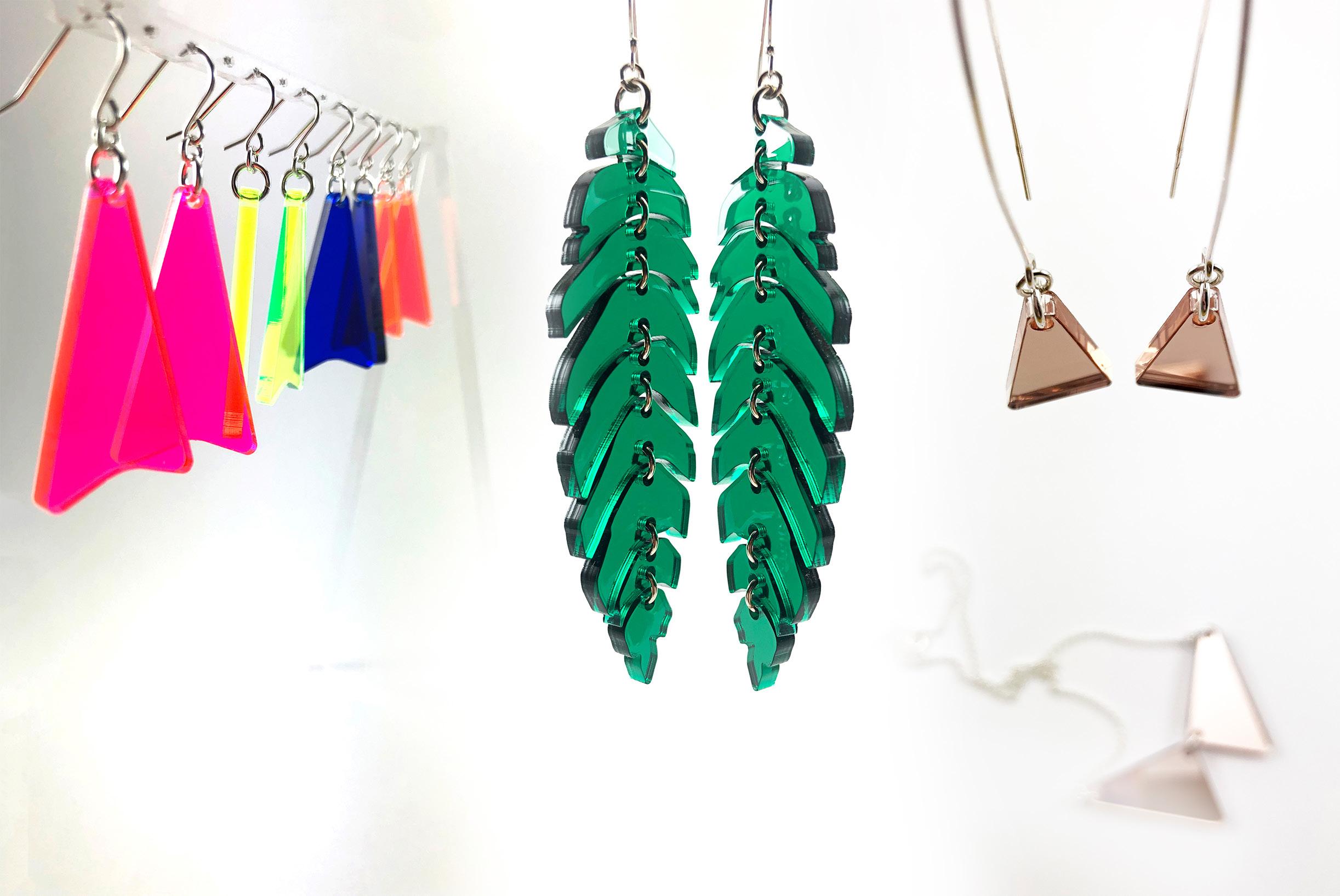
designsarkis@gmail.com
Let’s just say that these will boost your outfits up at least 3 levels of chic, get no less than 5 mentions a day,
all of the attention in the room. hehe ;-) Isn’t that Kayoot?!
KAYOOT These earrings are constructed using high precision laser cutting. Being only 3 mm thick, they are super lightweight. They are made from high quality acrylic
and 925 sterling silver.
and
FLASHBACK
The Legendary Divine Dies In Los Angeles Hotel Room (February 29, 1988)
On March 7, 1988, Harris Glenn Milstead – better known as Divine, the larger-than-life drag queen – died in his sleep of a heart attack attributed to his obesity, at the Regency Plaza Hotel on Hollywood Boulevard in a Los Angeles, where he was staying as a guest. He was 42.
“He was finally getting respect within the industry,” said Milstead’s manager, Bernard Jay, shortly after Milstead’s death. “He was getting the legitimate screen and television offers that showed the industry had finally accepted him as the very good character actor he always knew he was.”
According to Jay, Milstead had had a medical checkup the previous week and was declared in excellent health, other than his weight, “which had been a constant problem throughout his life.”
Born in Baltimore, Maryland, on October 19, 1945, to a conservative middle-class family, Milstead developed an early interest in drag while working as a women’s hairdresser. By the mid-1960s, he had embraced the city’s countercultural scene and befriended filmmaker John Waters, who gave him the name “Divine” and the tagline of “the most beautiful woman in the world, almost.” After appearing in several short films, Divine took a lead role in Waters’ early films including Mondo Trasho (1969), Multiple Maniacs (1970), Pink Flamingos (1972) and
Female Trouble (1974), all of which have achieved cult status over the years, but at the time created a stir with film censors. (No one who’s seen Pink Flamingos will ever forget the infamous scene when Divine as Babs Johnson eats dog feces.)
The risqué movies provided Milstead and his character Divine with a vehicle for fame and notoriety. He went on to have a successful cabaret career in Europe, achieved international chart success with pop hits like “You Think You’re a Man,” “I’m So Beautiful” and “Walk Like a Man,” all of which were performed in drag, and secured movie roles outside of Waters’ universe… although he remained a muse to Waters and would later appear in Polyester (1981) and Hairspray (1988), the latter of which represented his breakthrough into mainstream cinema.
Divine died of heart failure just three weeks after Hairspray was given a wide release in movie theatres. At the time of his death he was preparing for another mainstream role, Uncle Otto on the hit TV sitcom Married ...With Children
Milstead avoided speaking about his sexuality early in his career, but identified as gay and was more open about his sexuality in his final years. Today he remains a cult figure, particularly within the LGBTQ+ community, with his music played in queer clubs, serving as an inspiration to many.
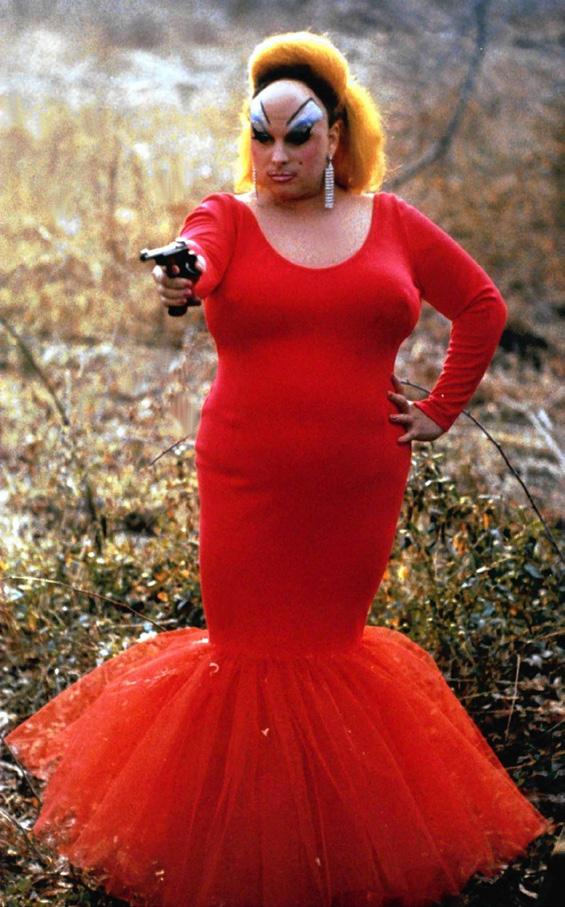
52 IN MAGAZINE MARCH / APRIL 2023
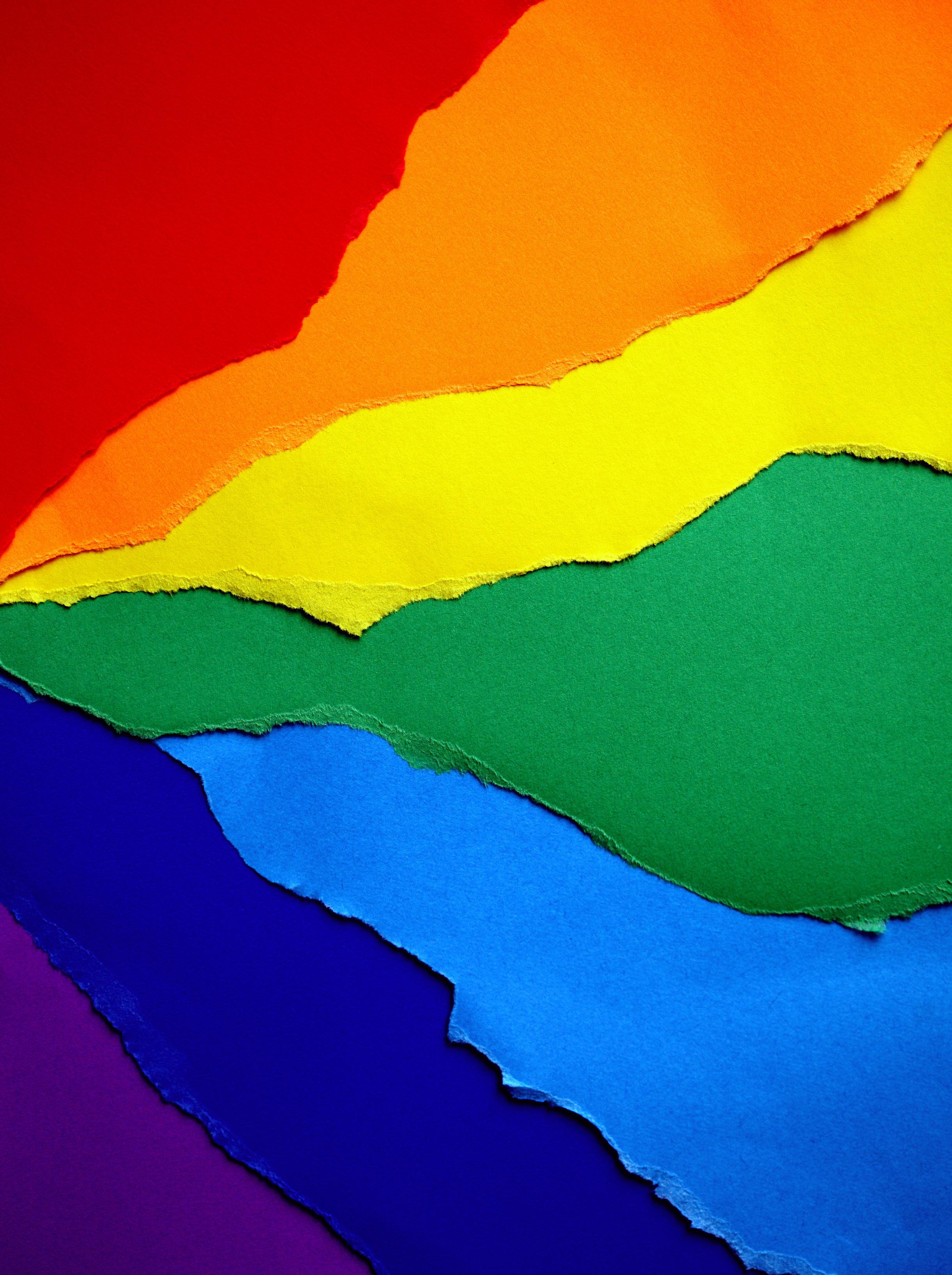 Photo by Katie Rainbow on Unsplash
Photo by Katie Rainbow on Unsplash
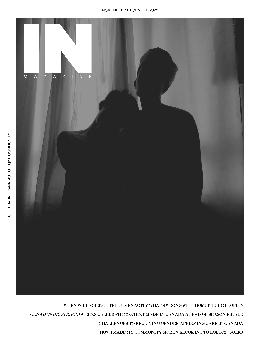






54 IN MAGAZINE MARCH / APRIL 2023 inmagazine.ca INMagazineCA PUBLISHED BI-MONTHLY ONLINE CONTENT EVERY DAY IN MAGAZINE IS CANADA’S LEADING LGBTQ2+ DIGITAL PUBLICATION, WEBSITE AND COMMUNITY PLATFORM



















 By Luis Augusto Nobre
By Luis Augusto Nobre



 By Kimahli Powell
By Kimahli Powell




 By Warren Urquhart
By Warren Urquhart




























































 Photo by Katie Rainbow on Unsplash
Photo by Katie Rainbow on Unsplash






